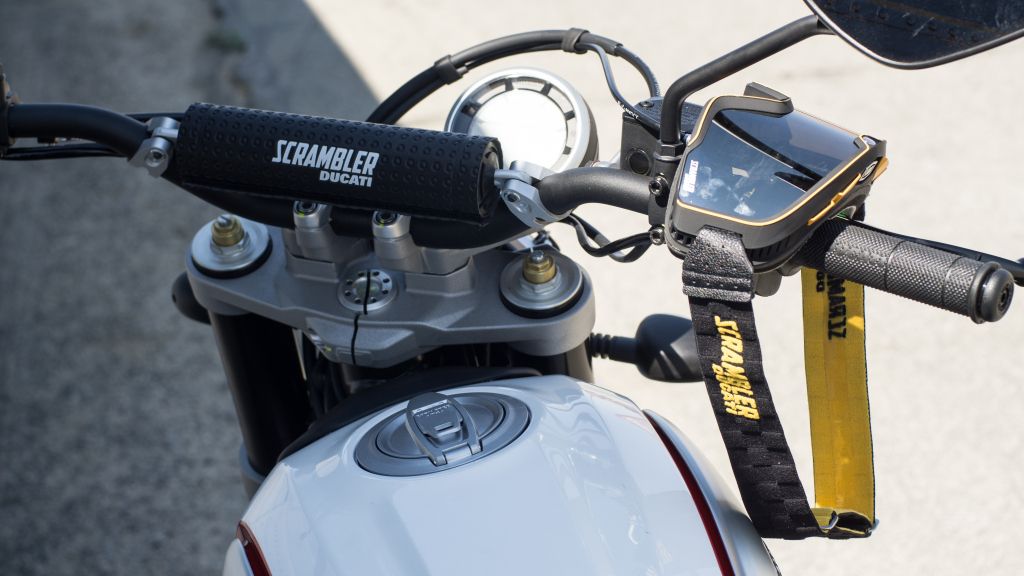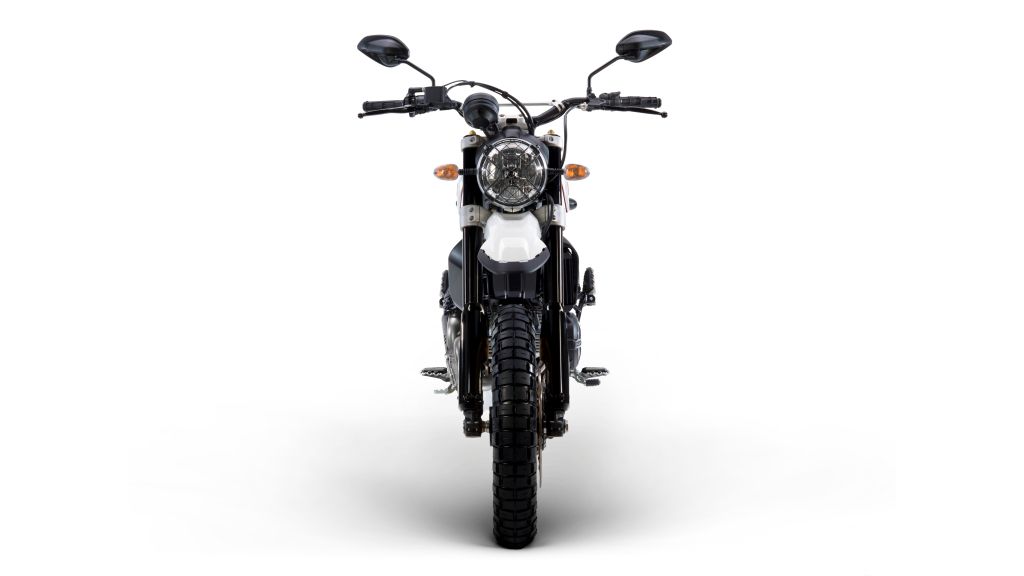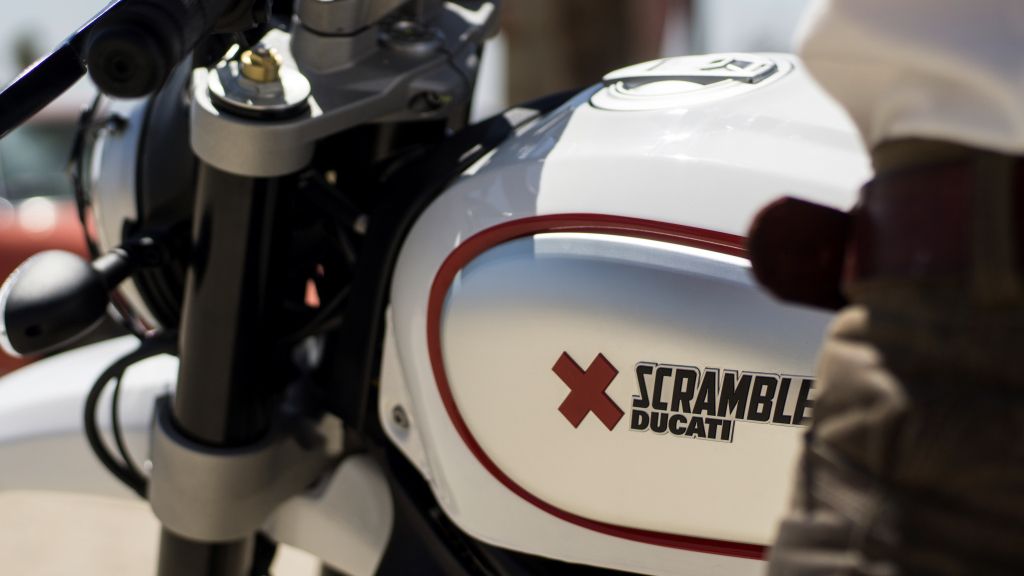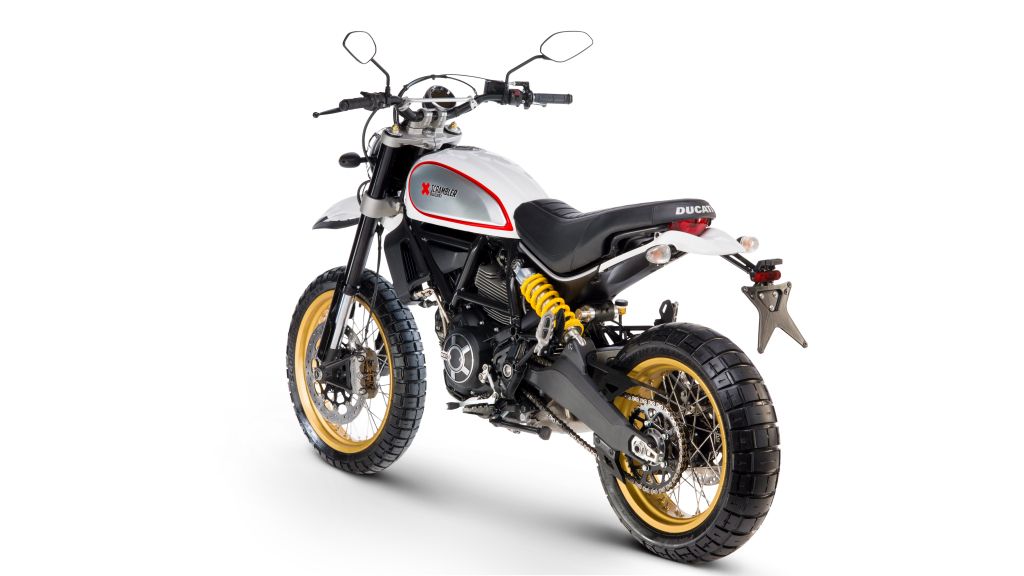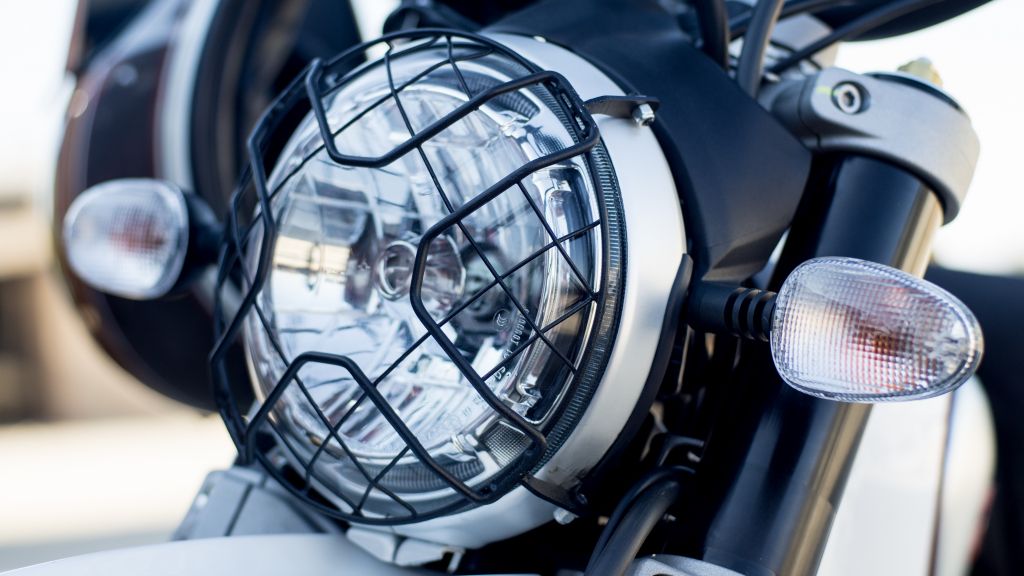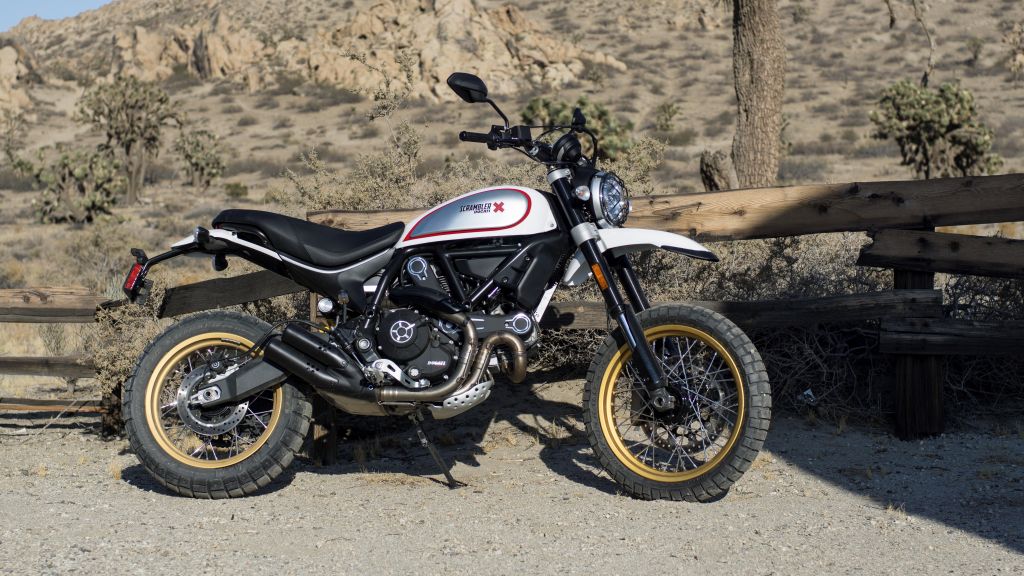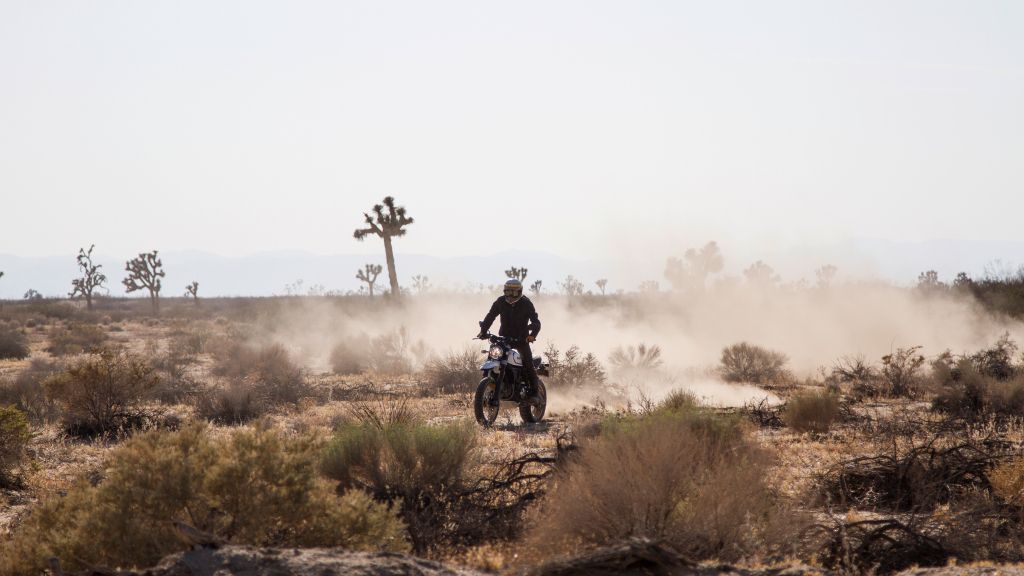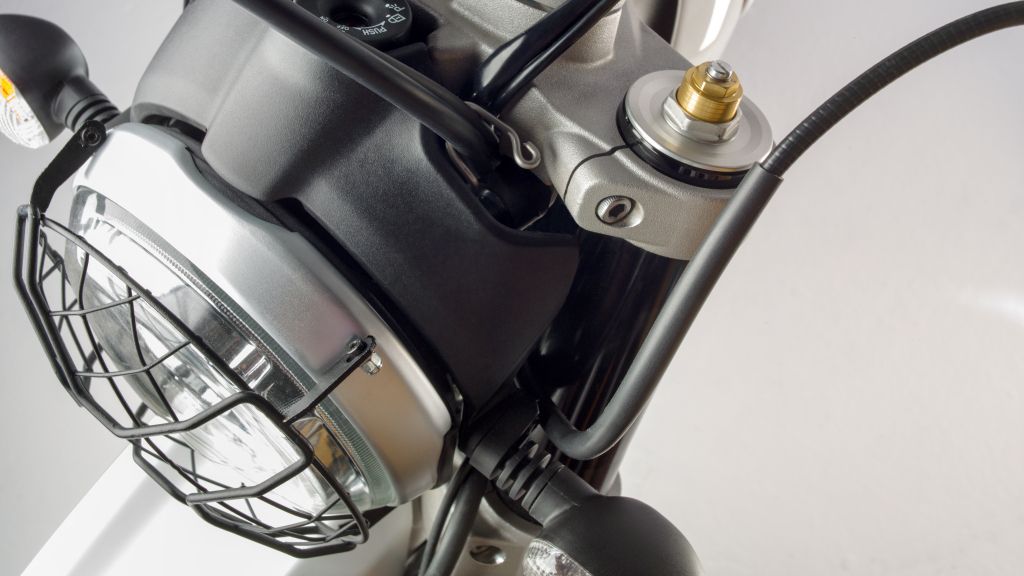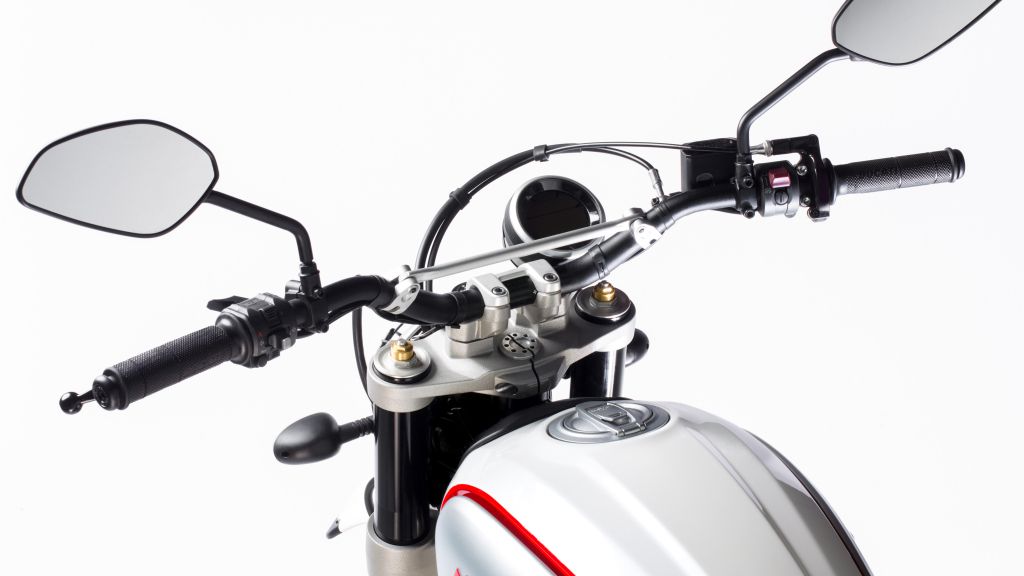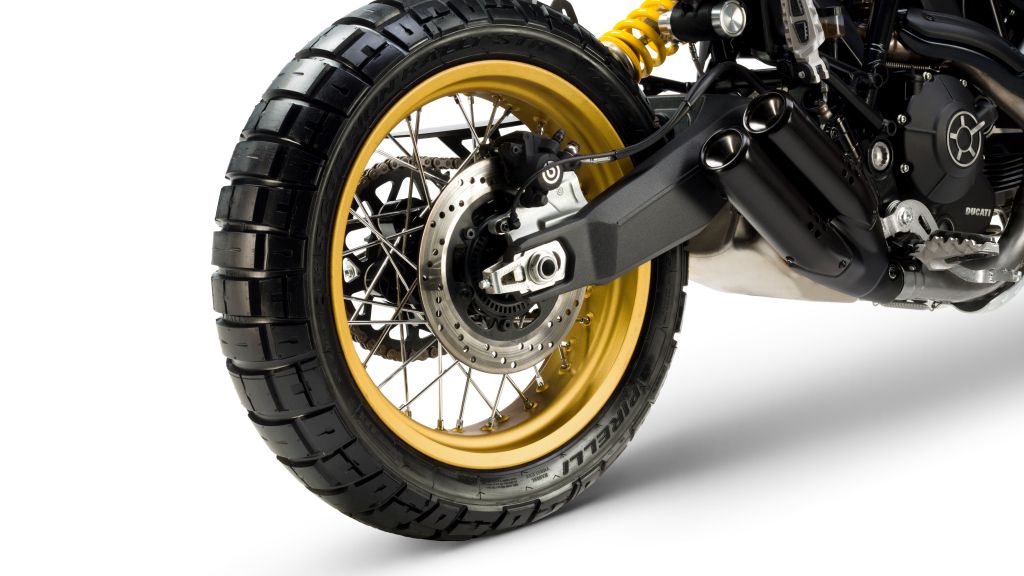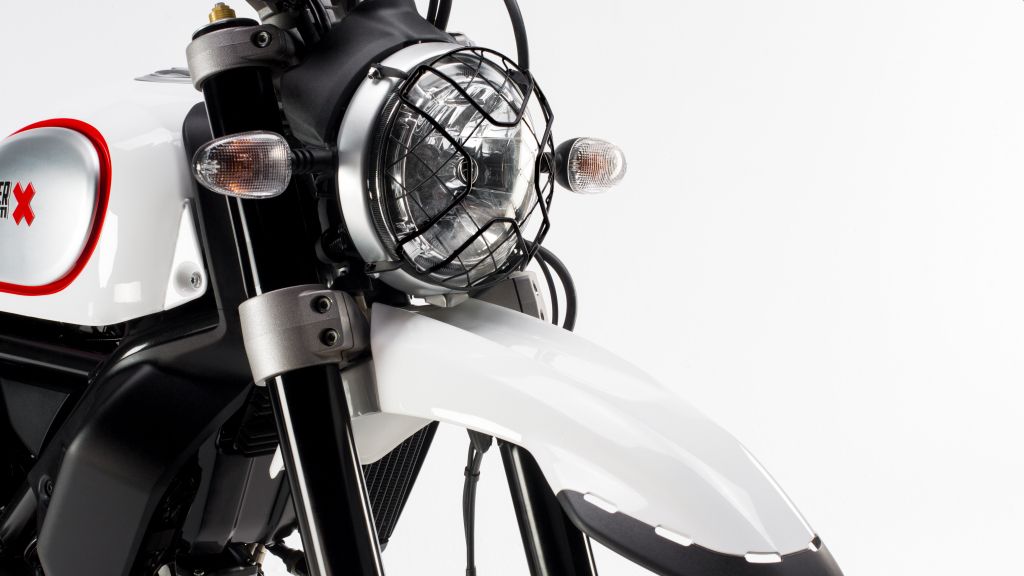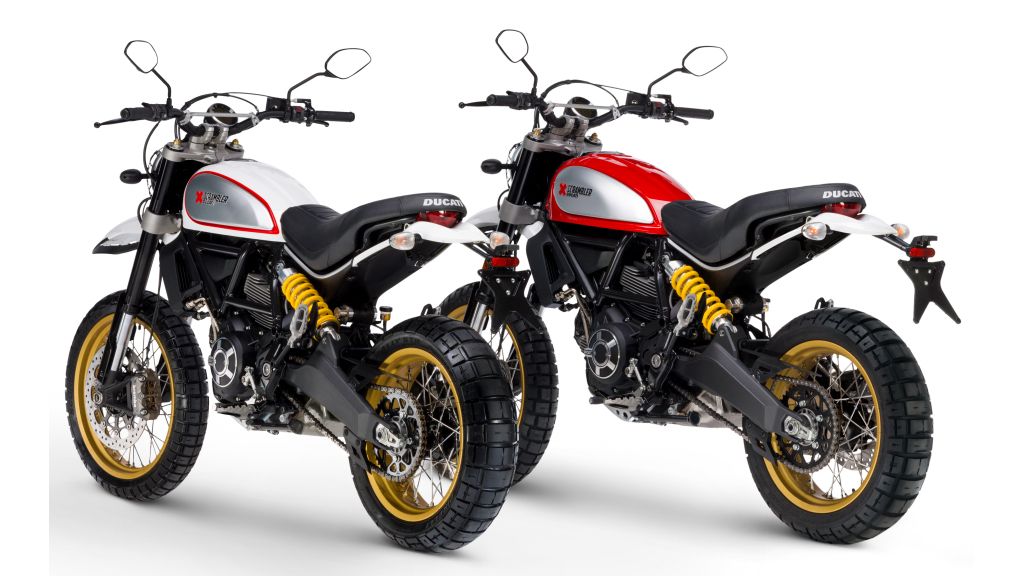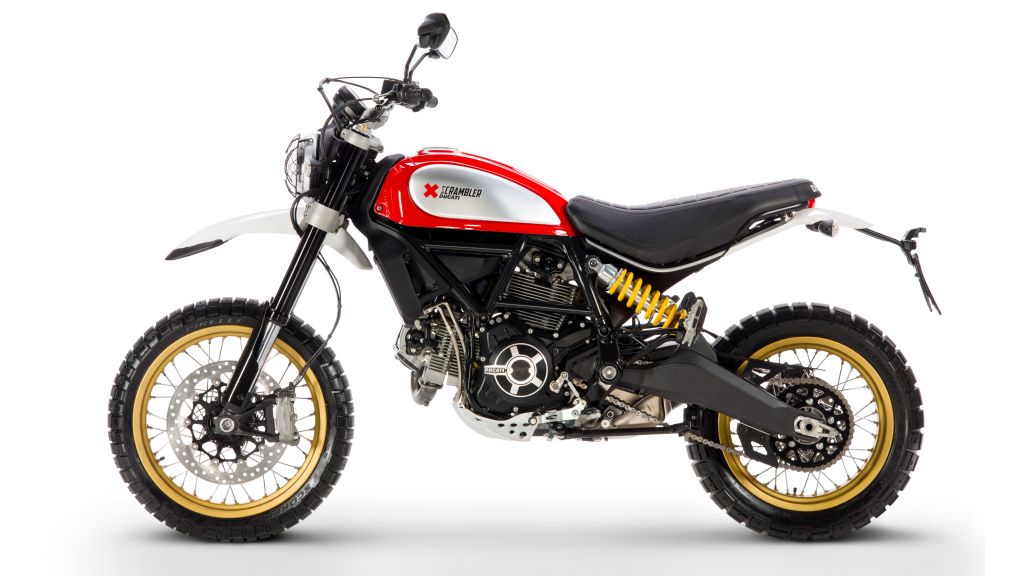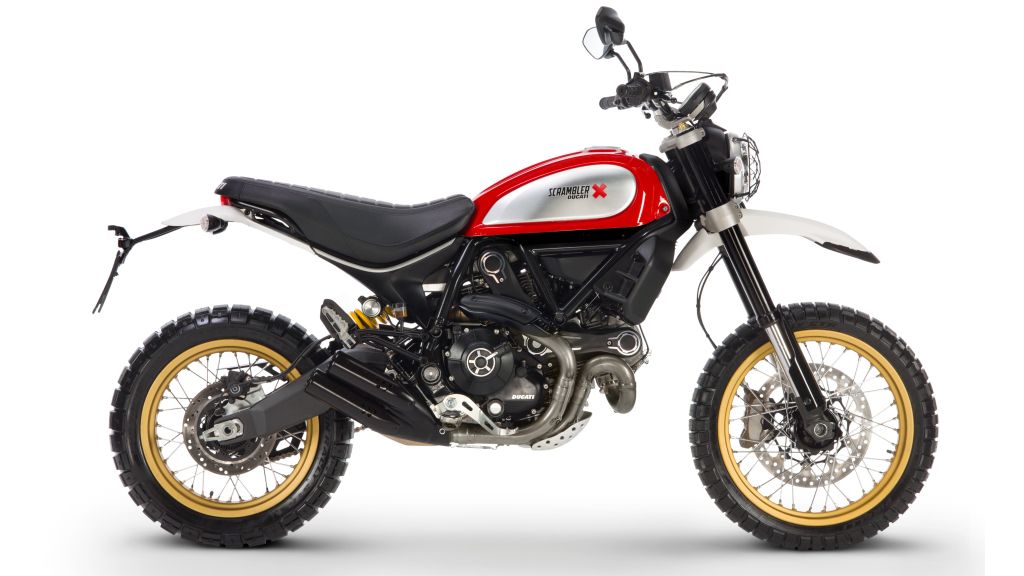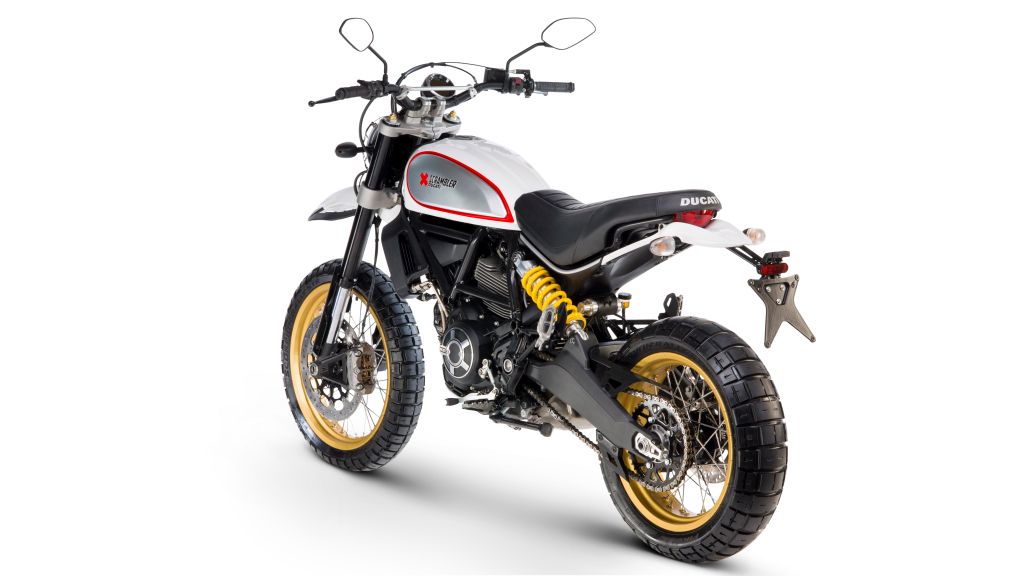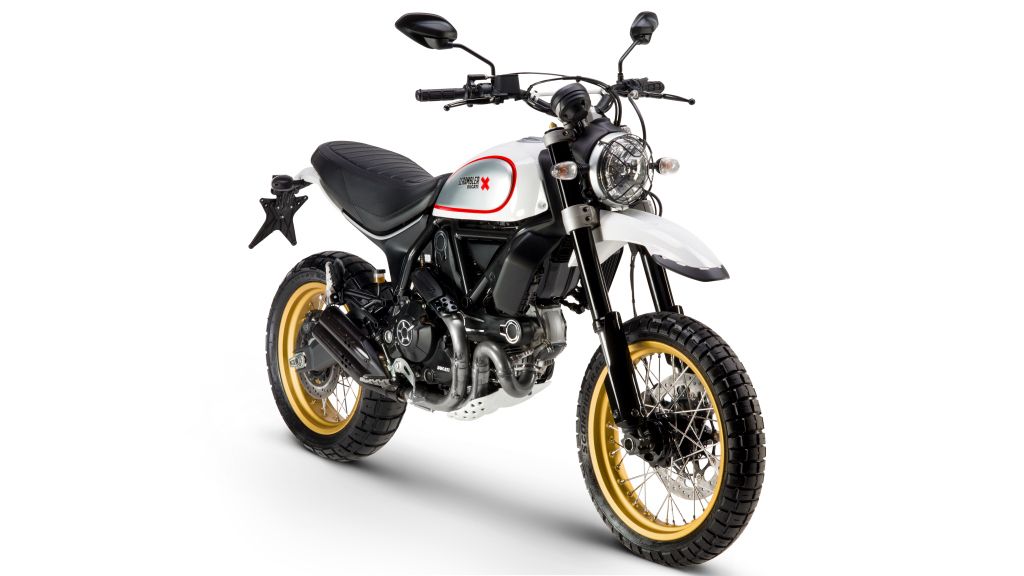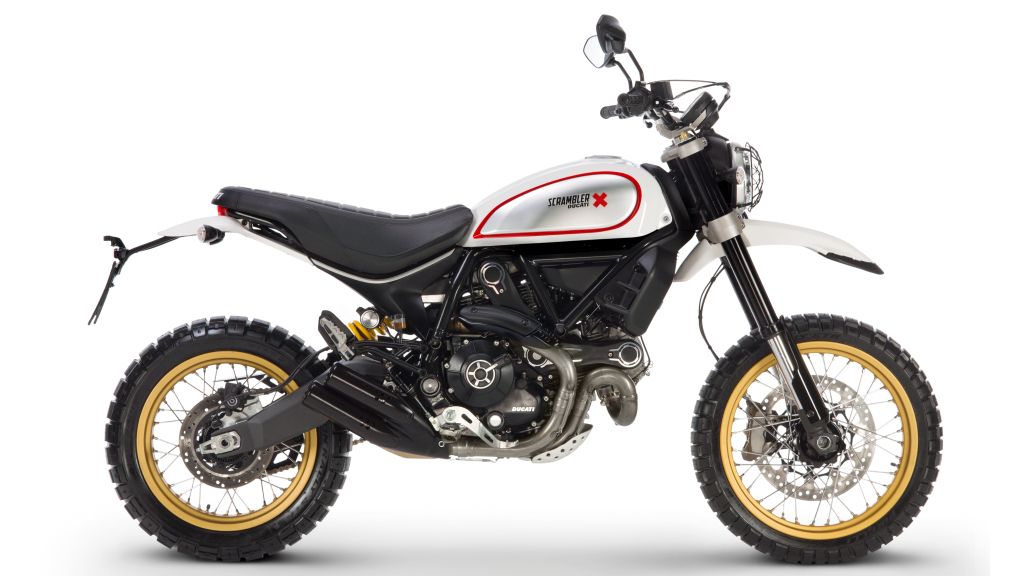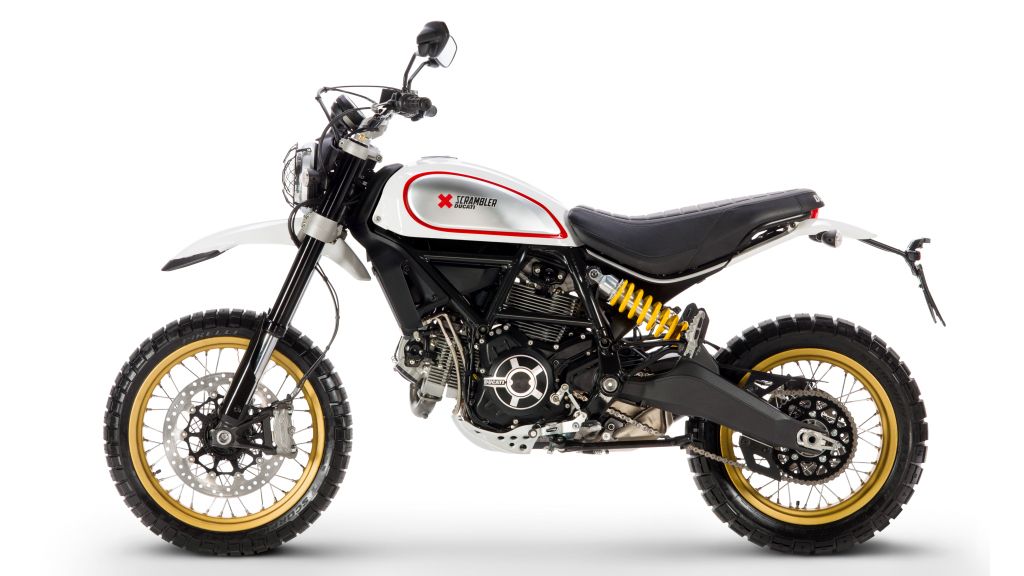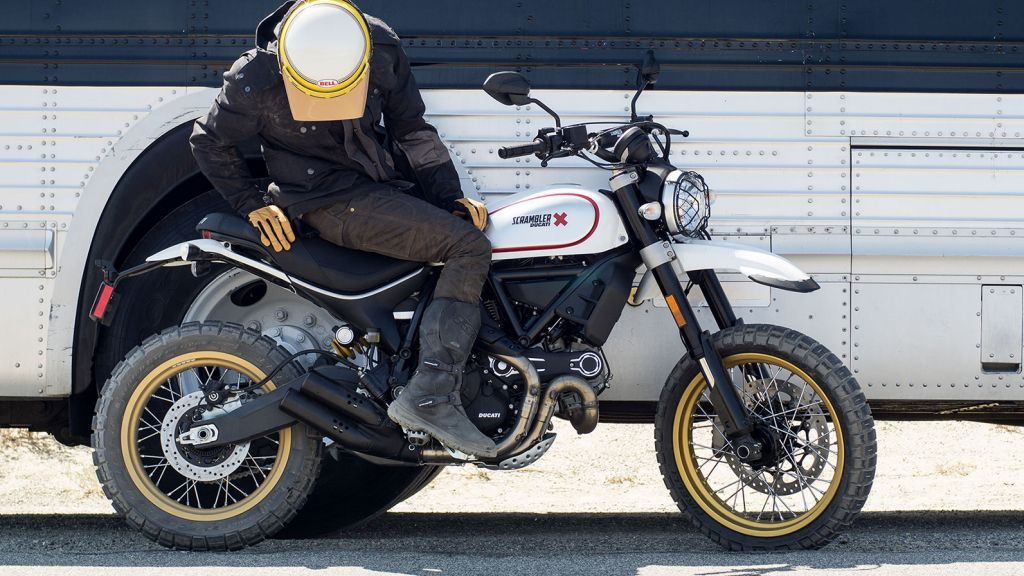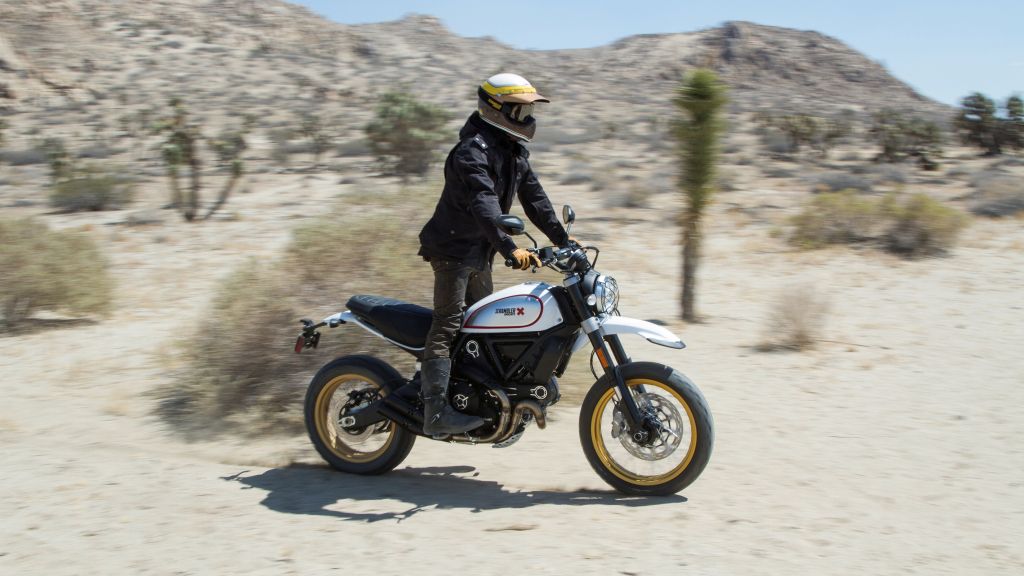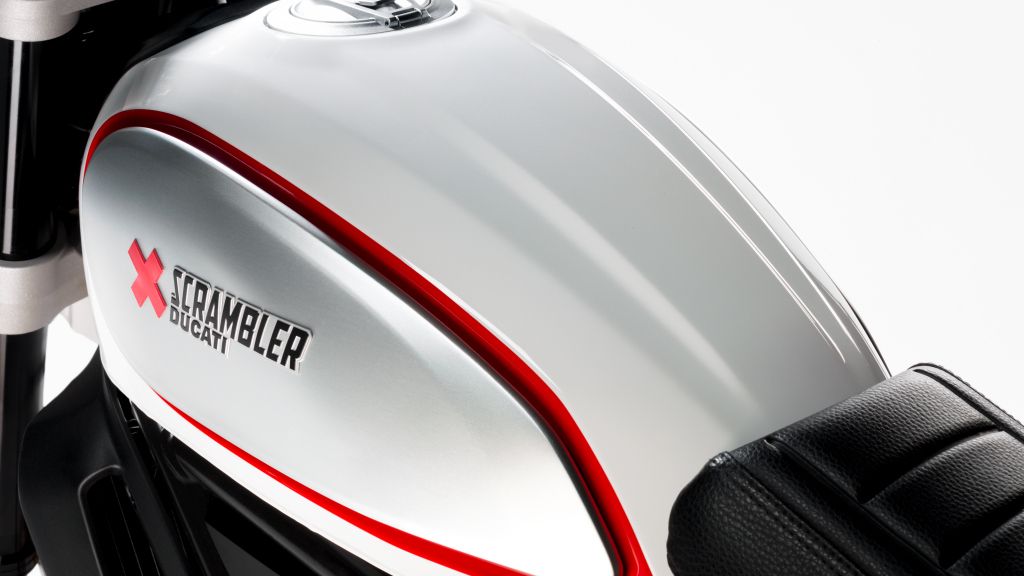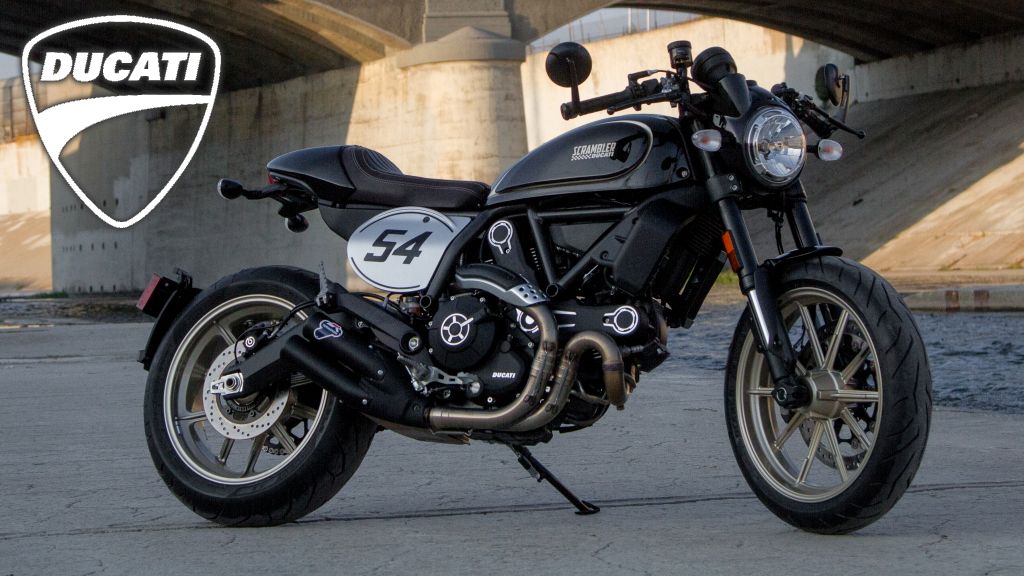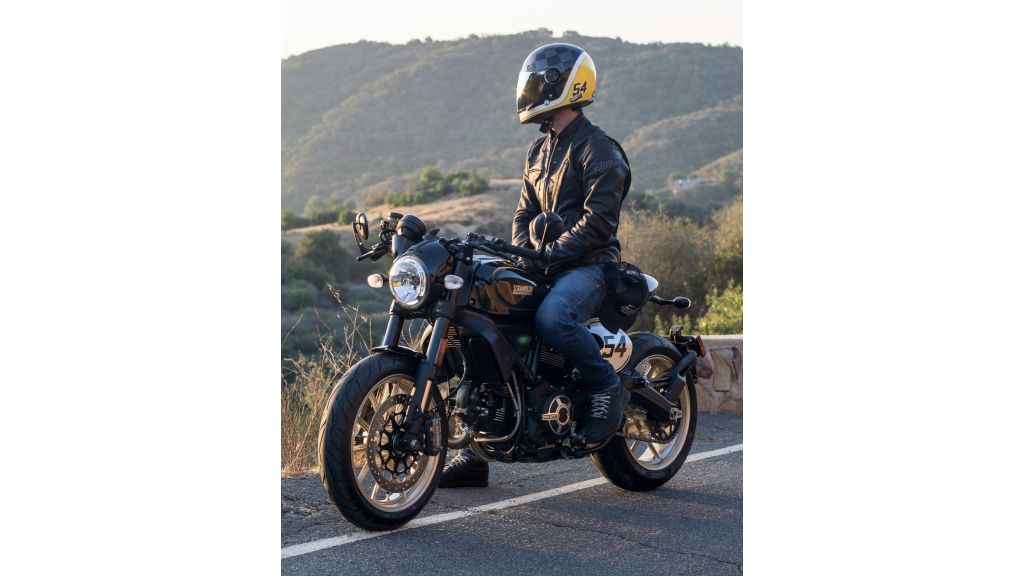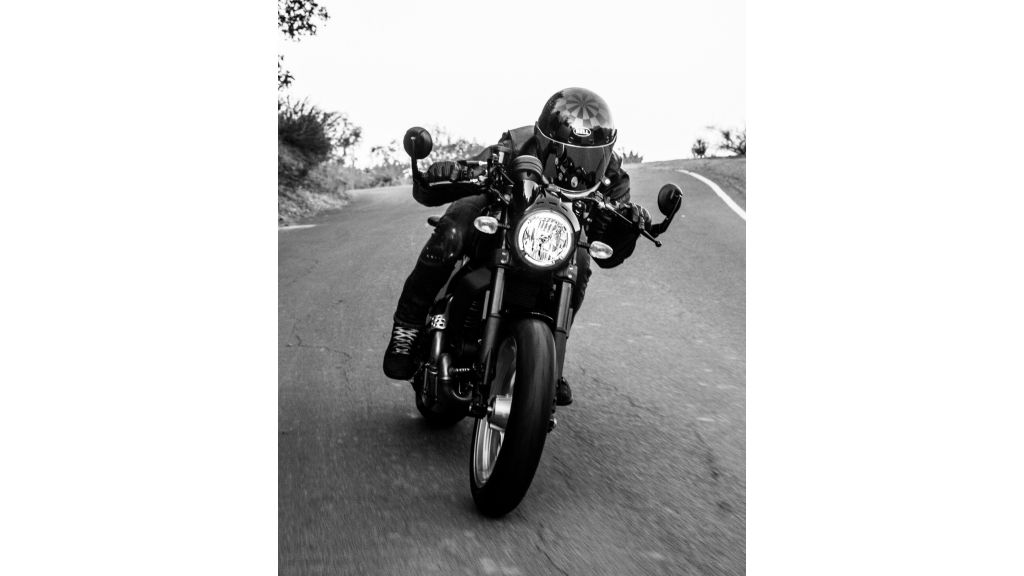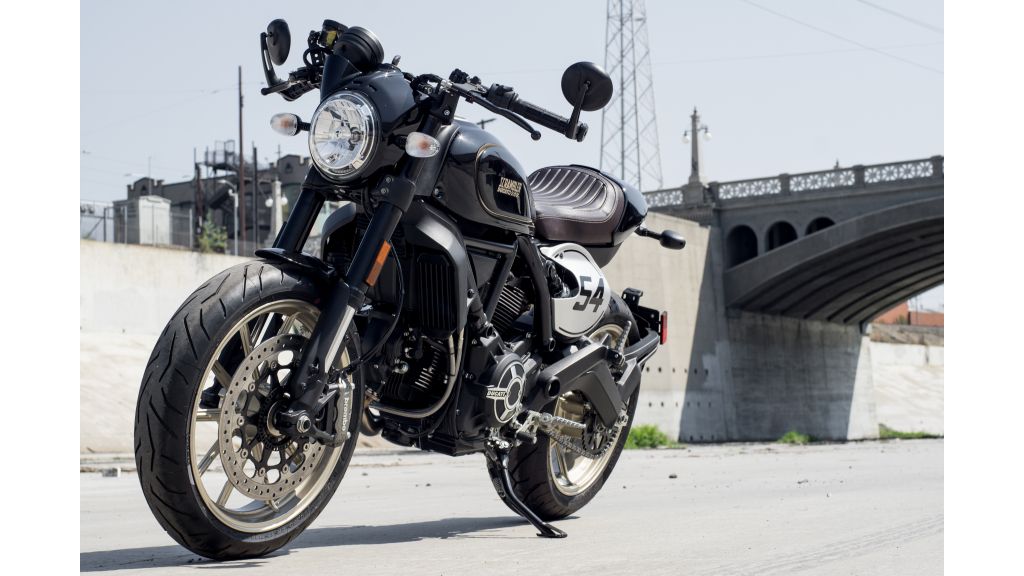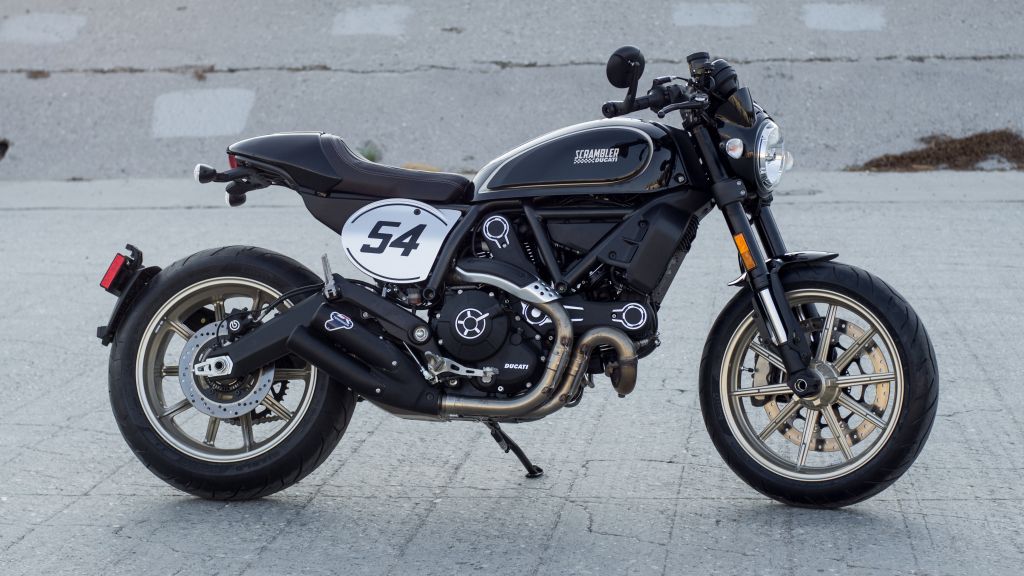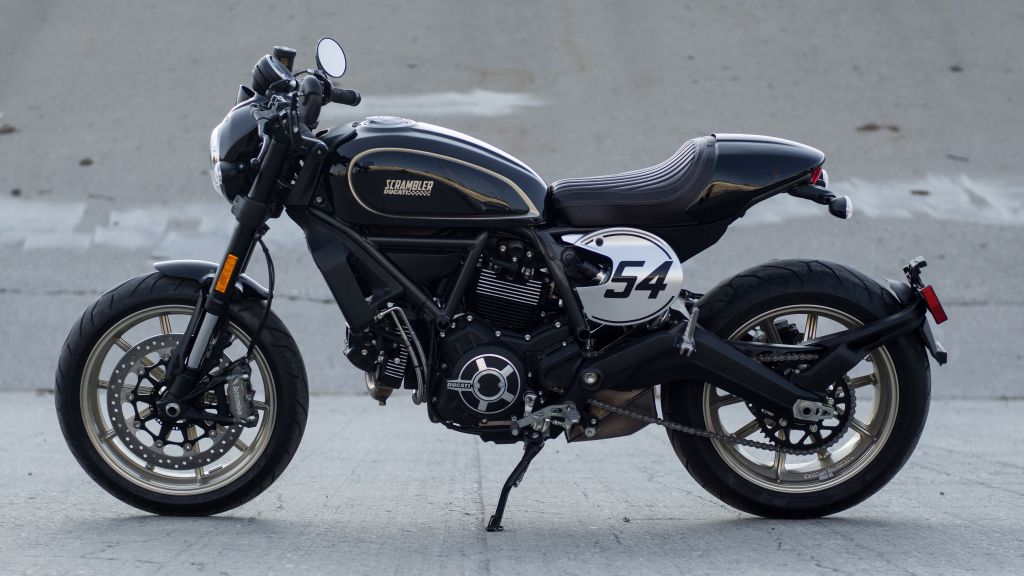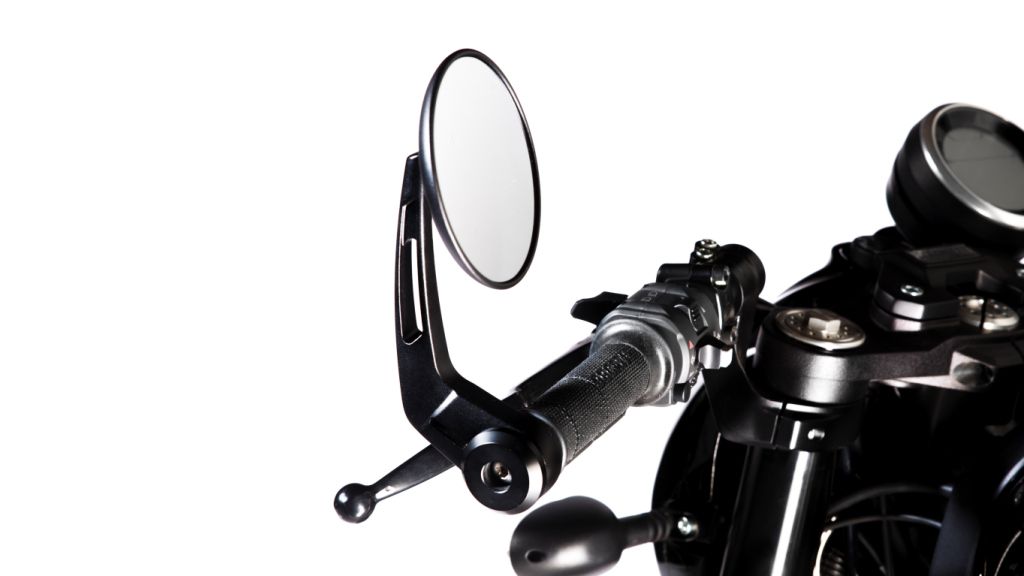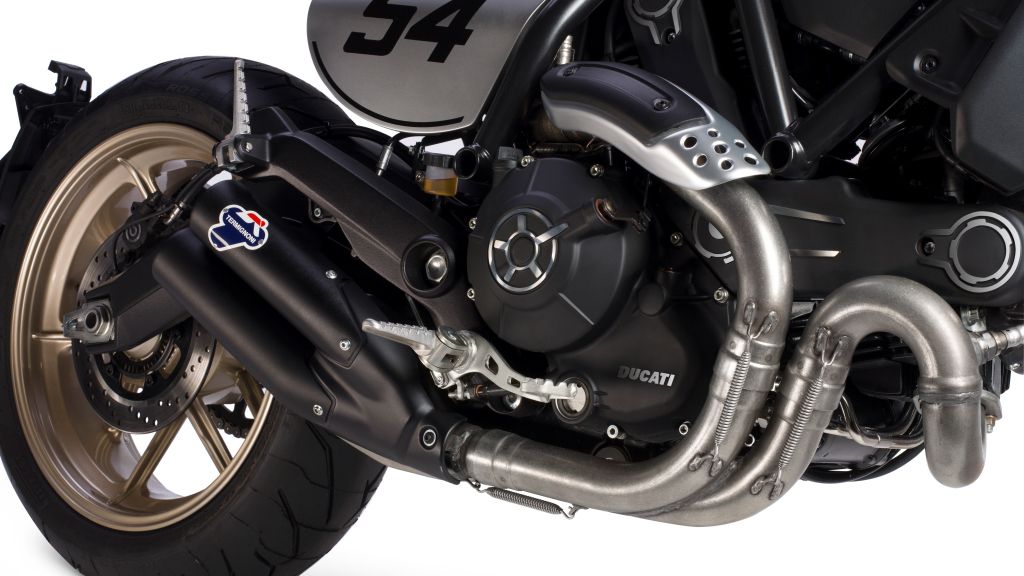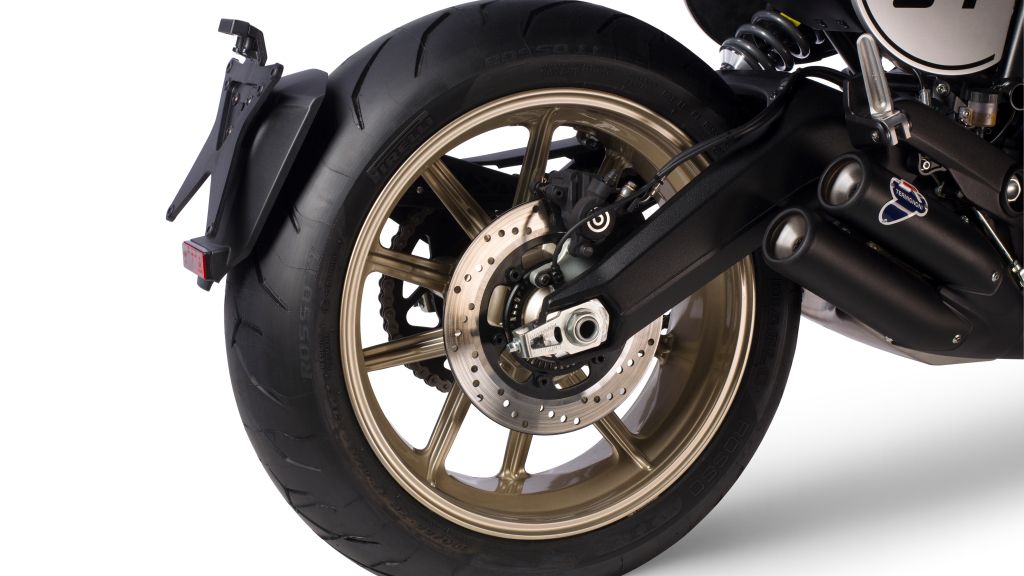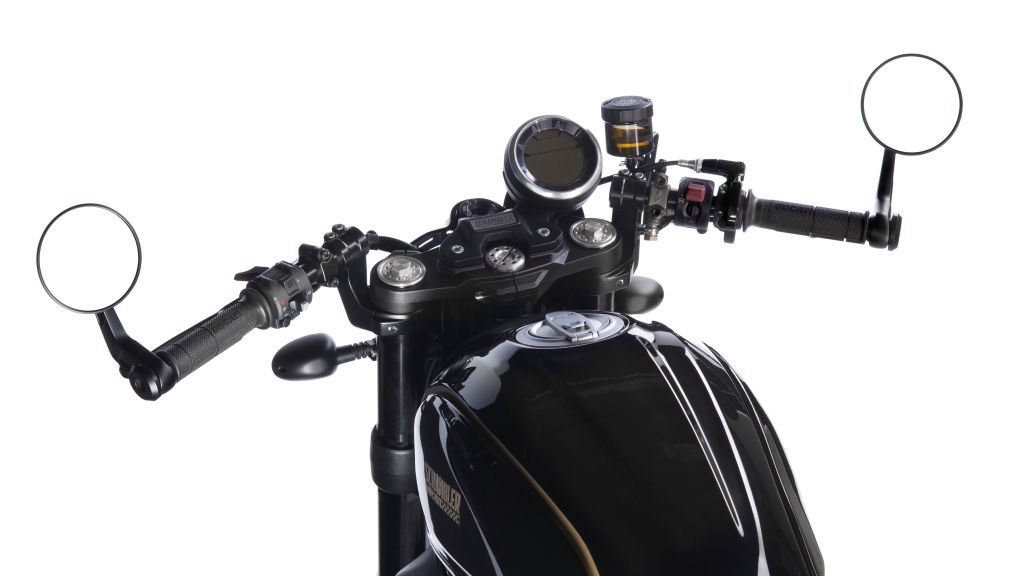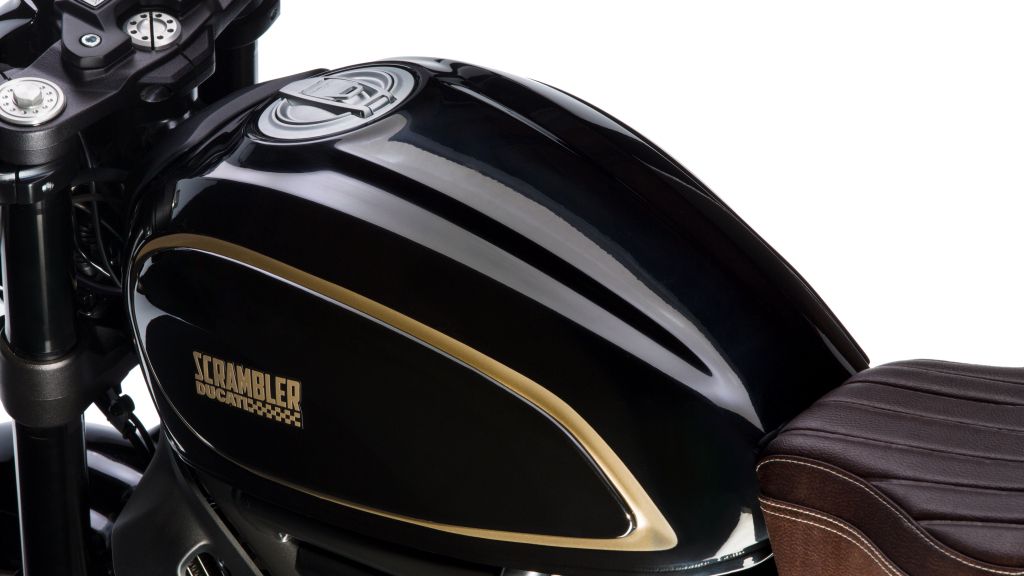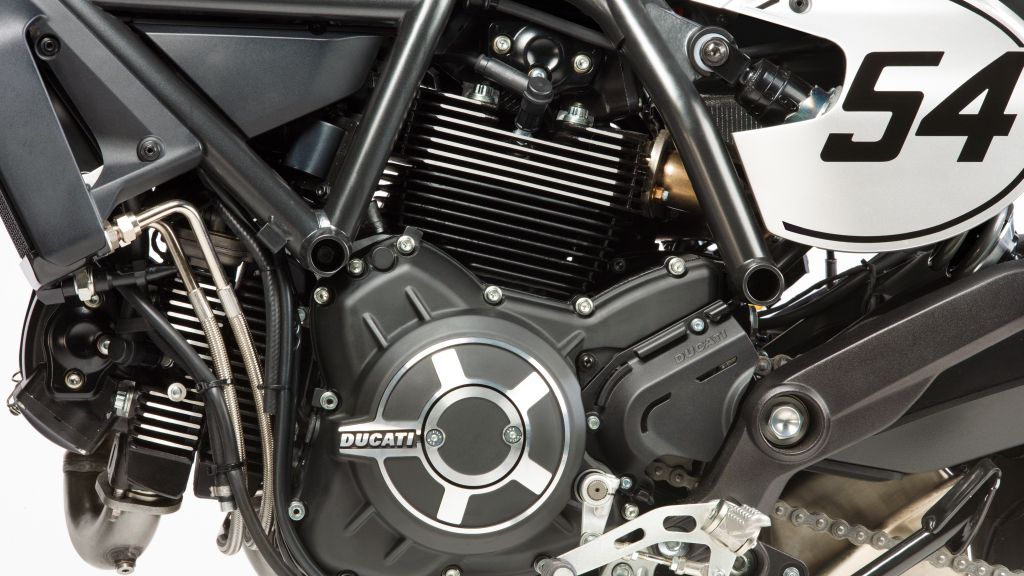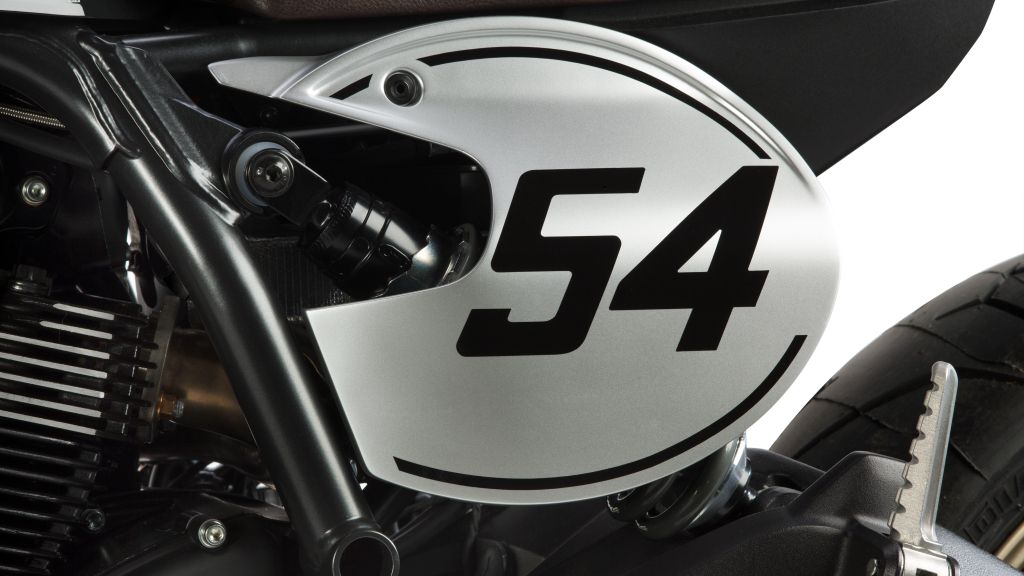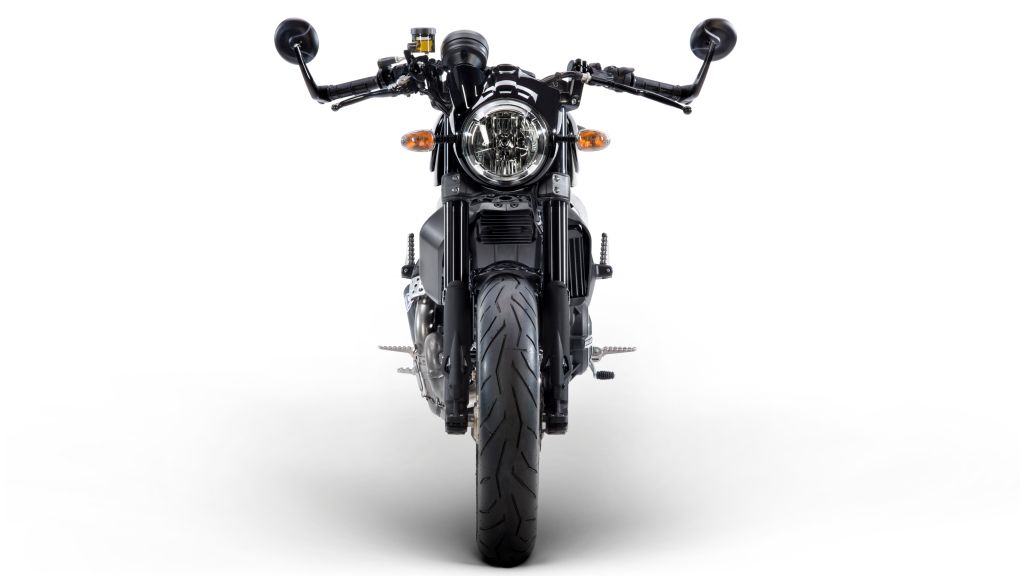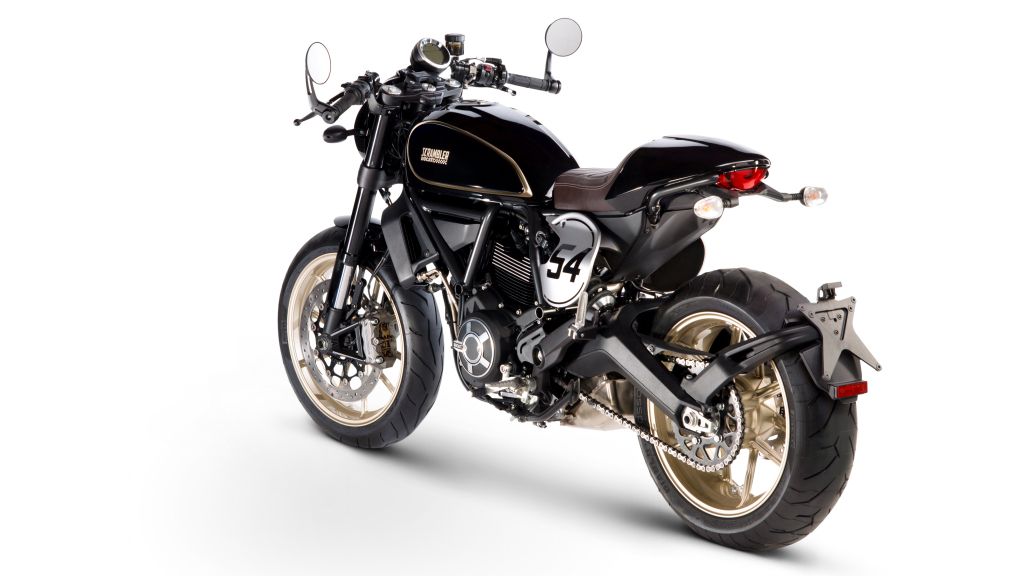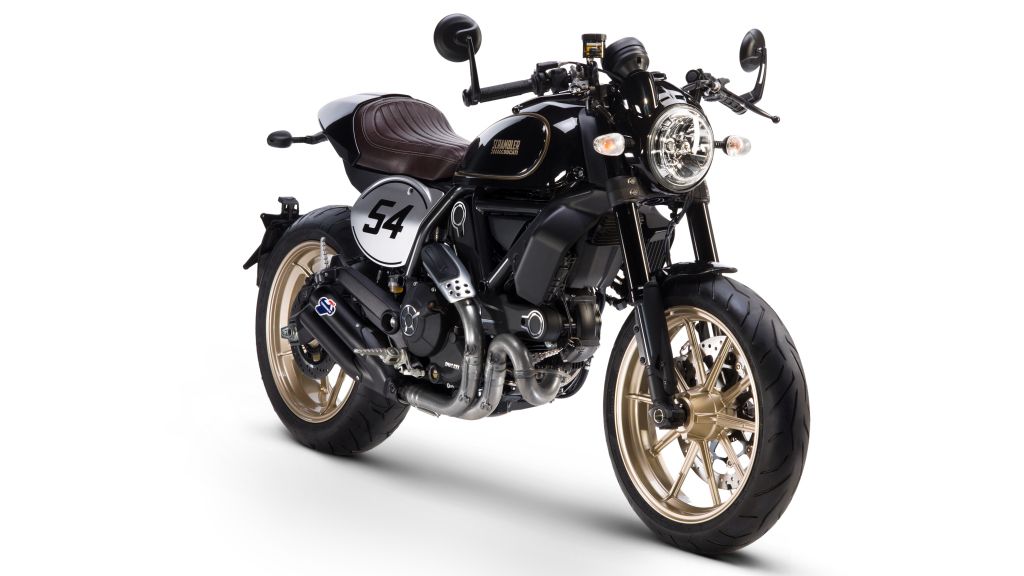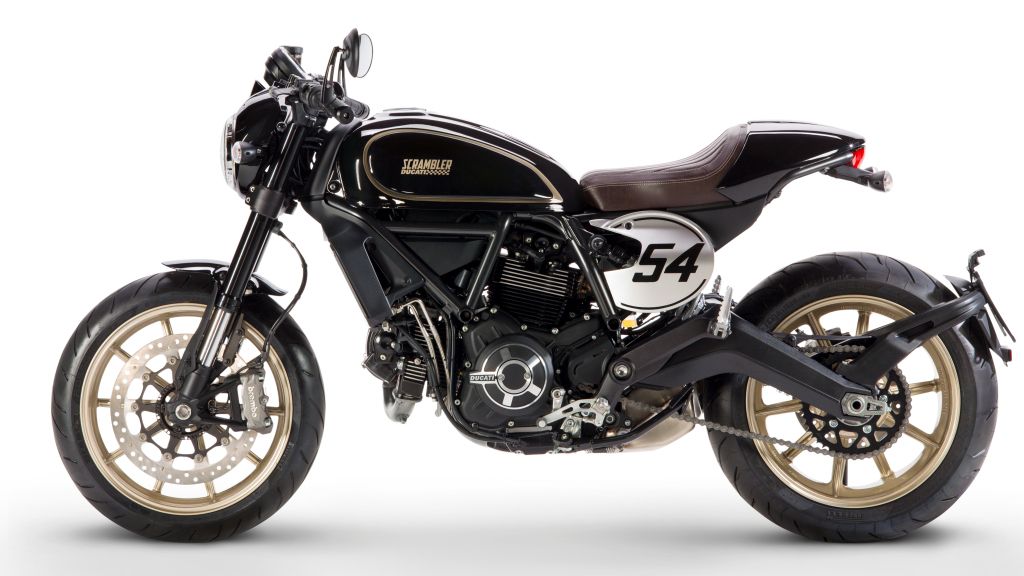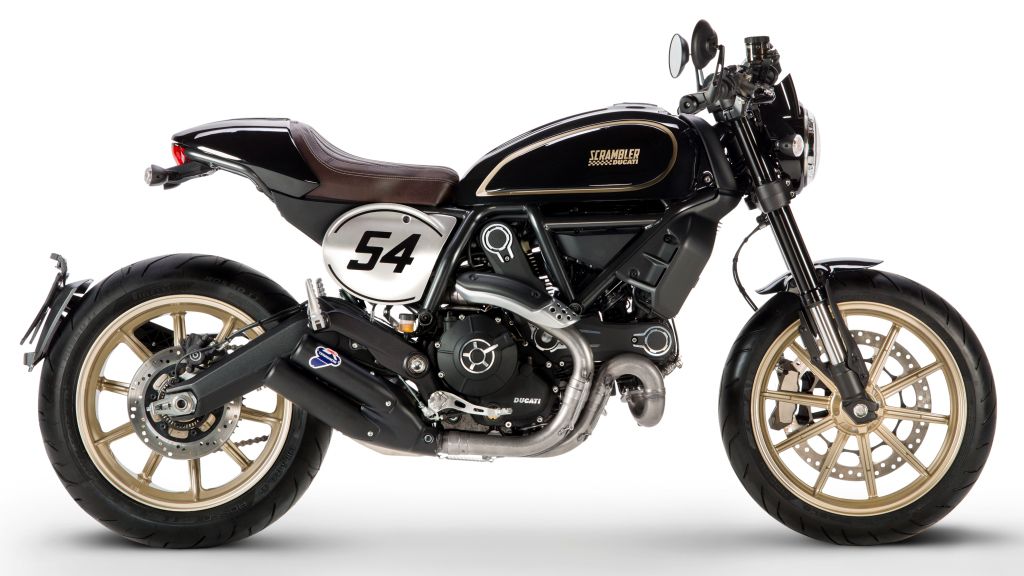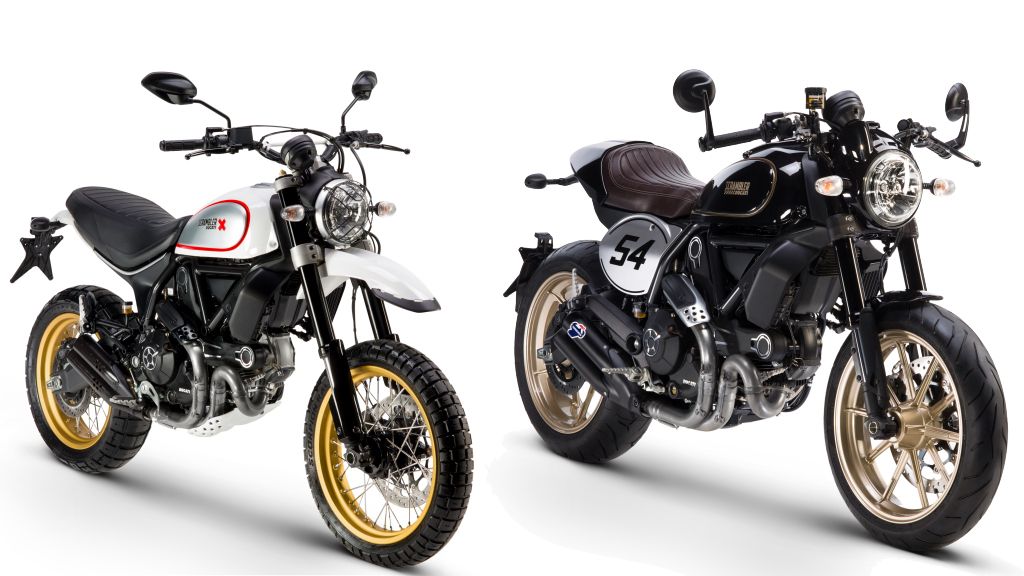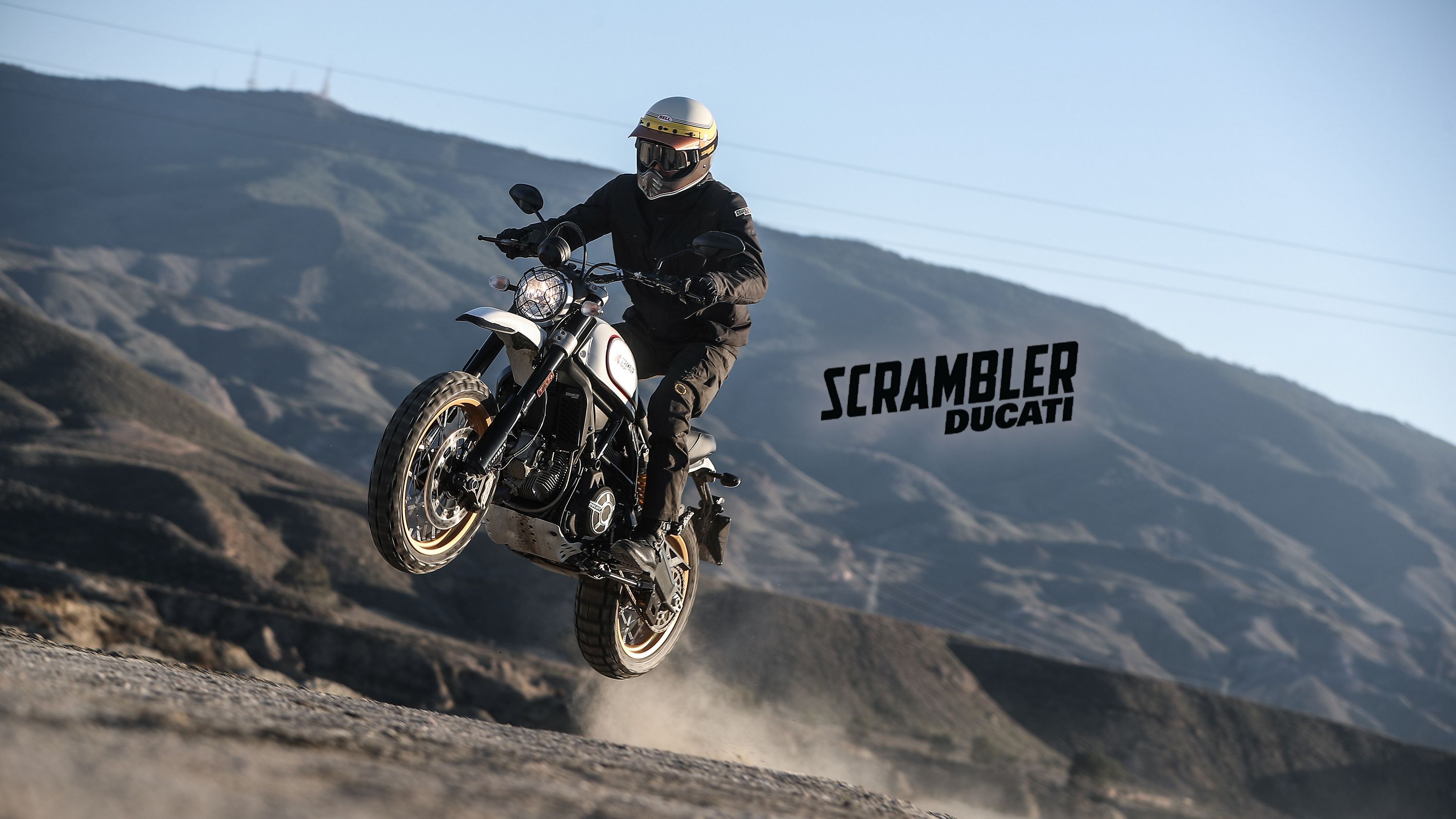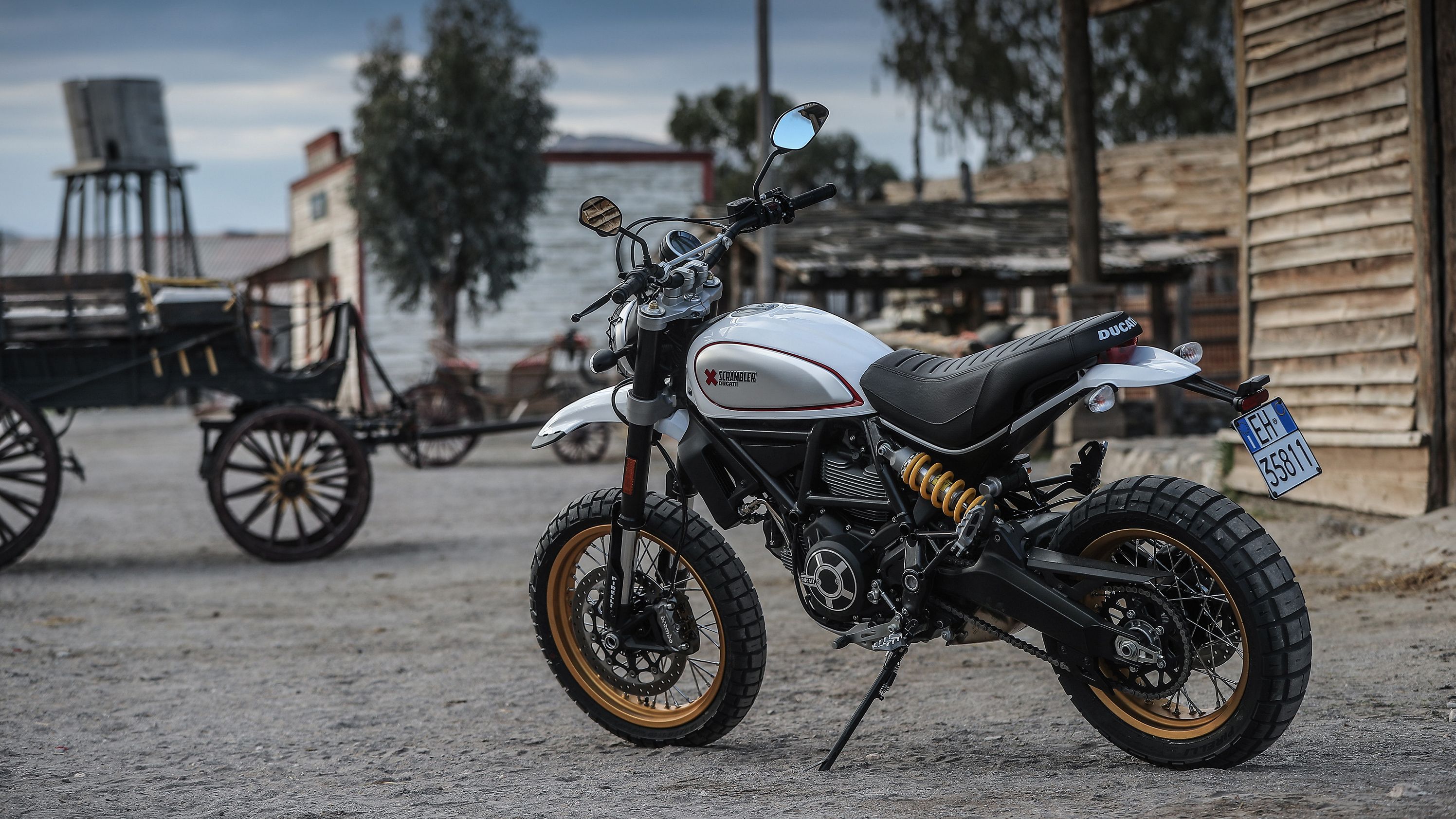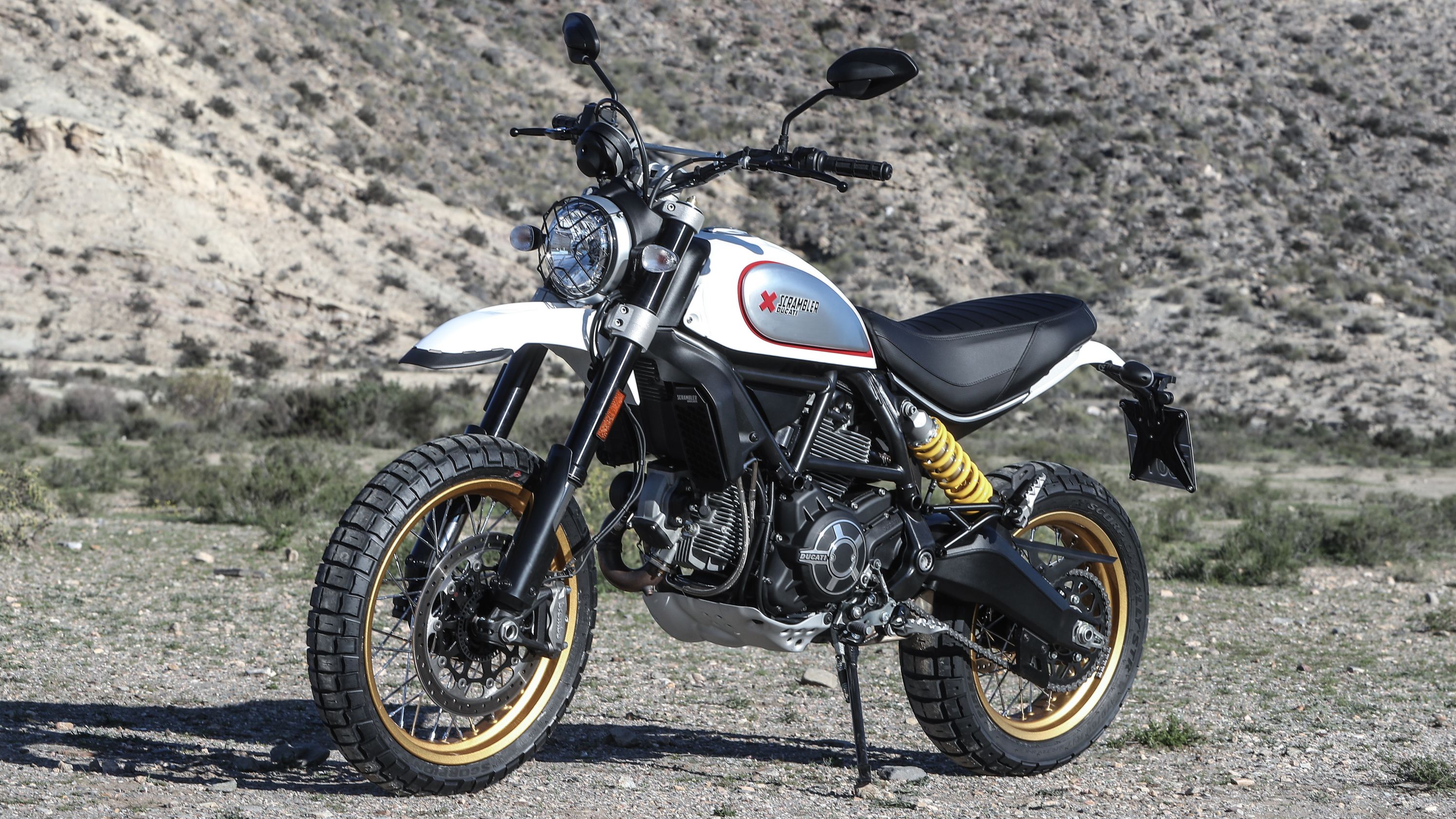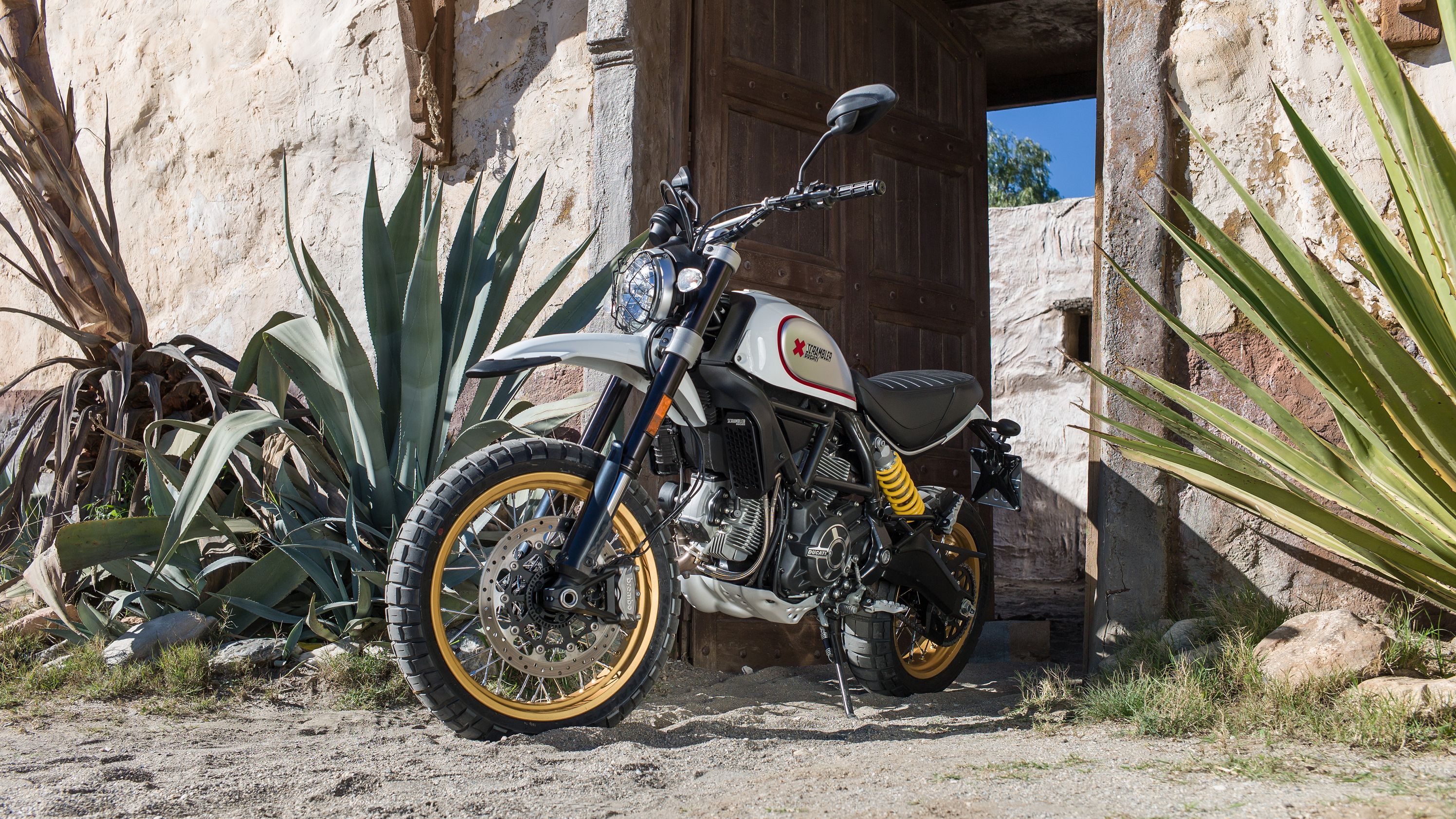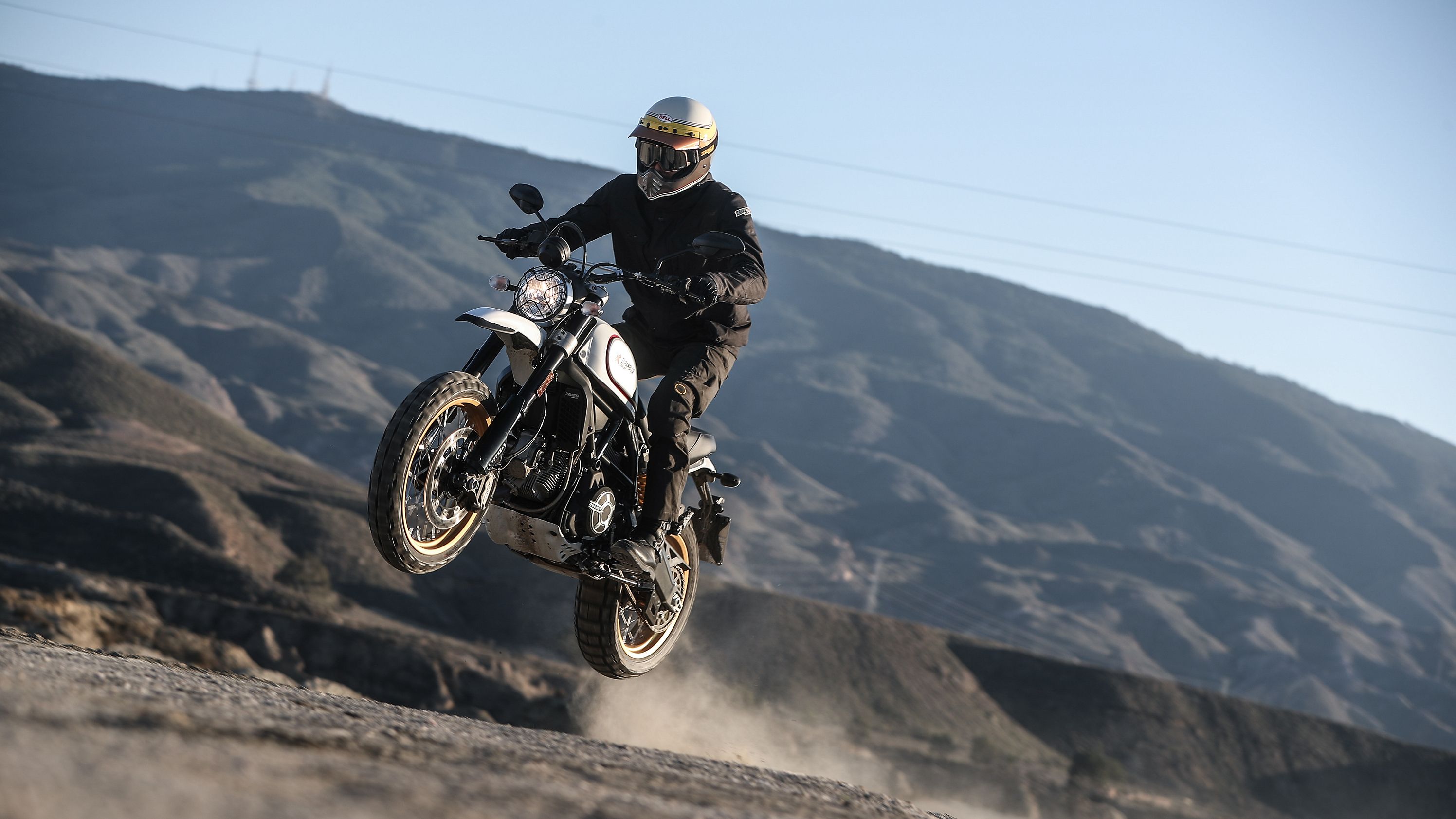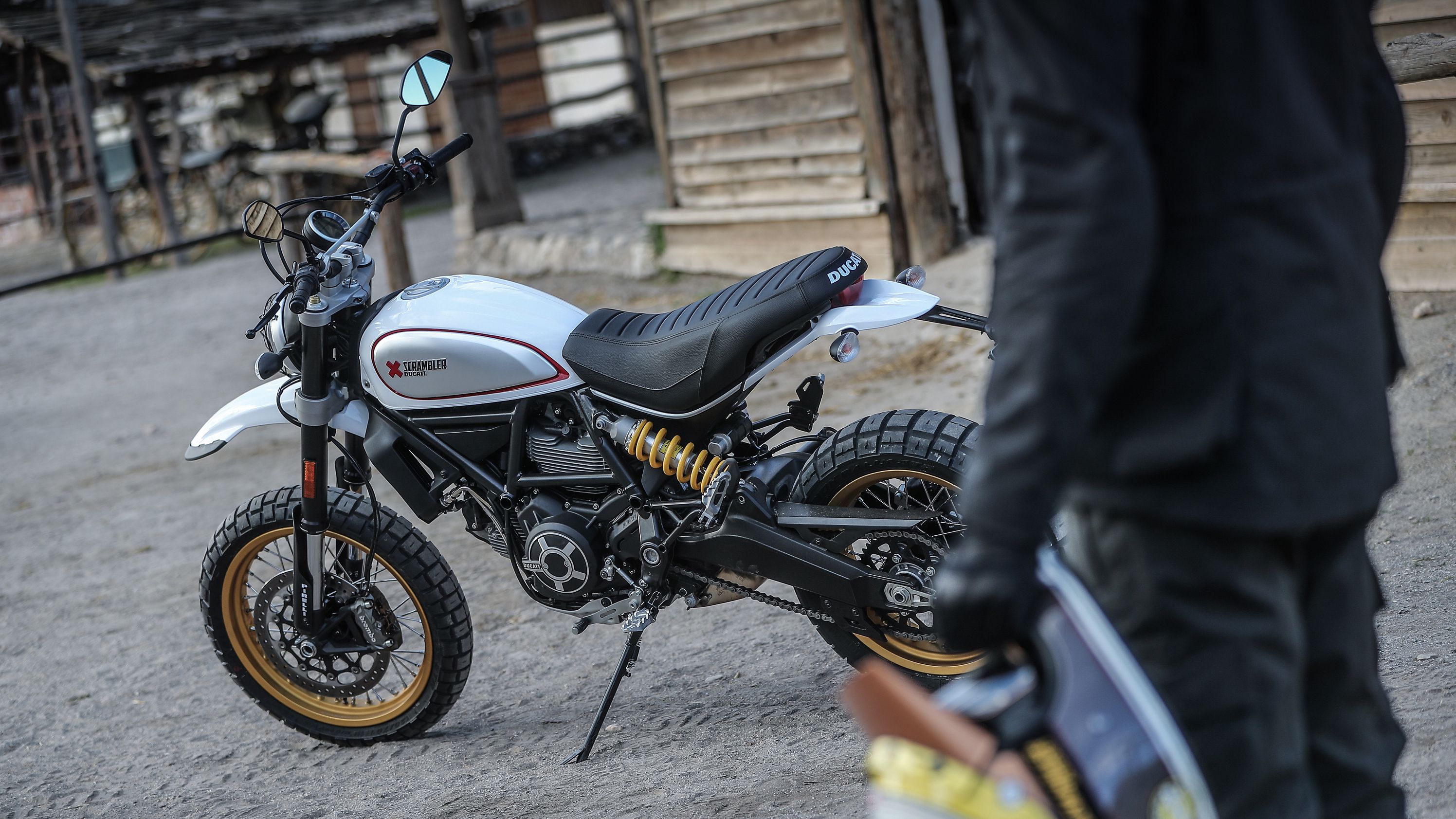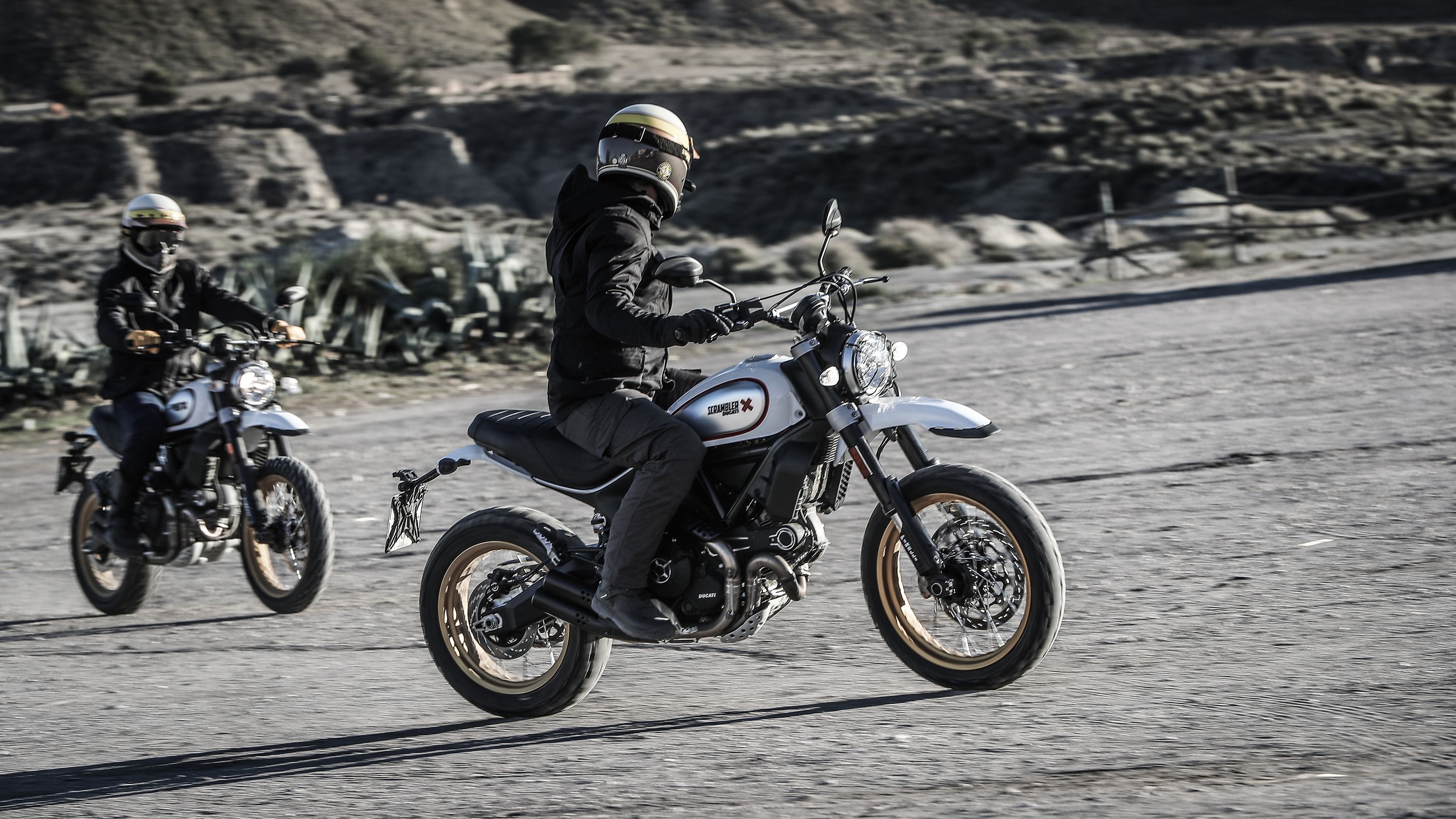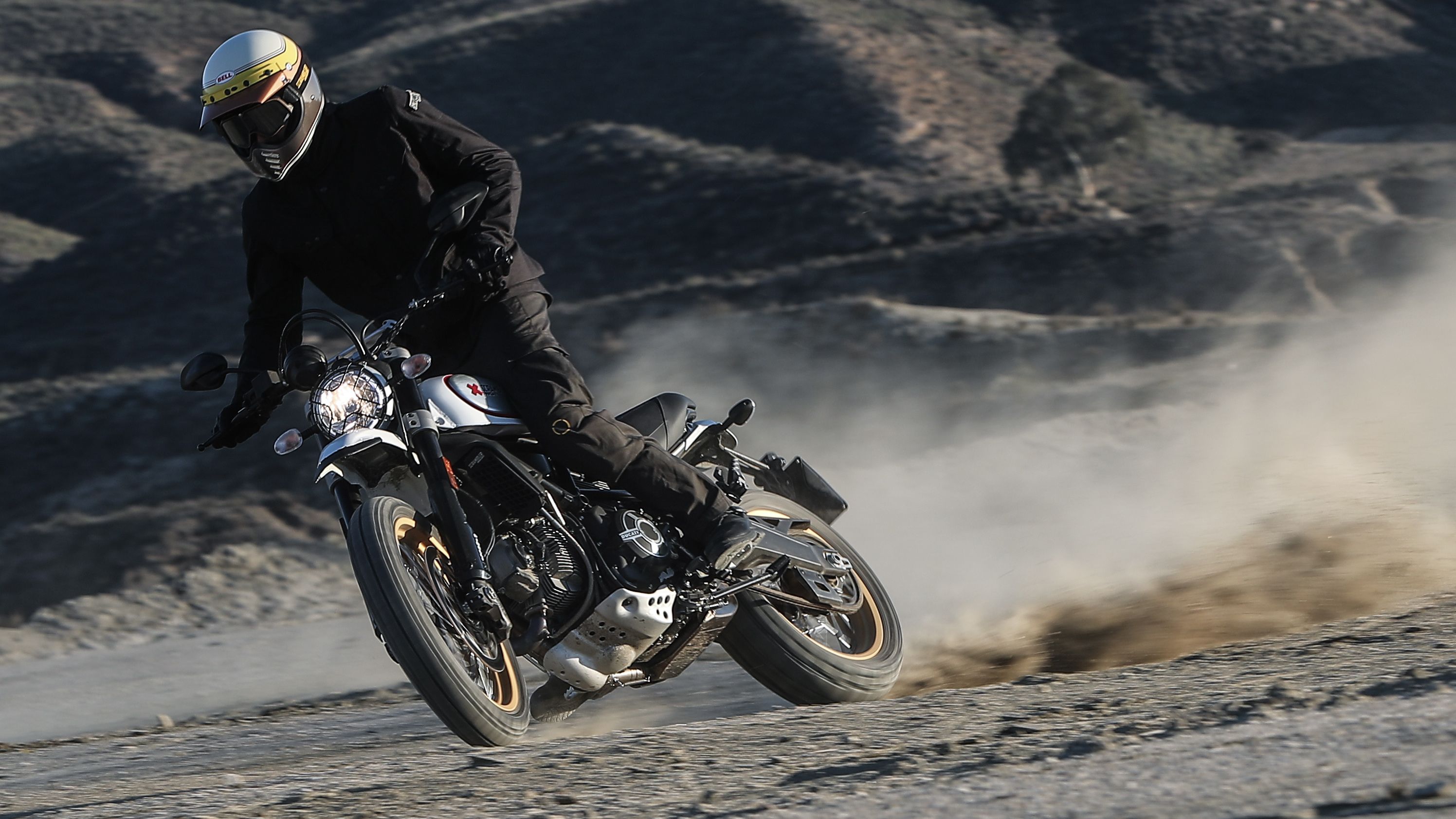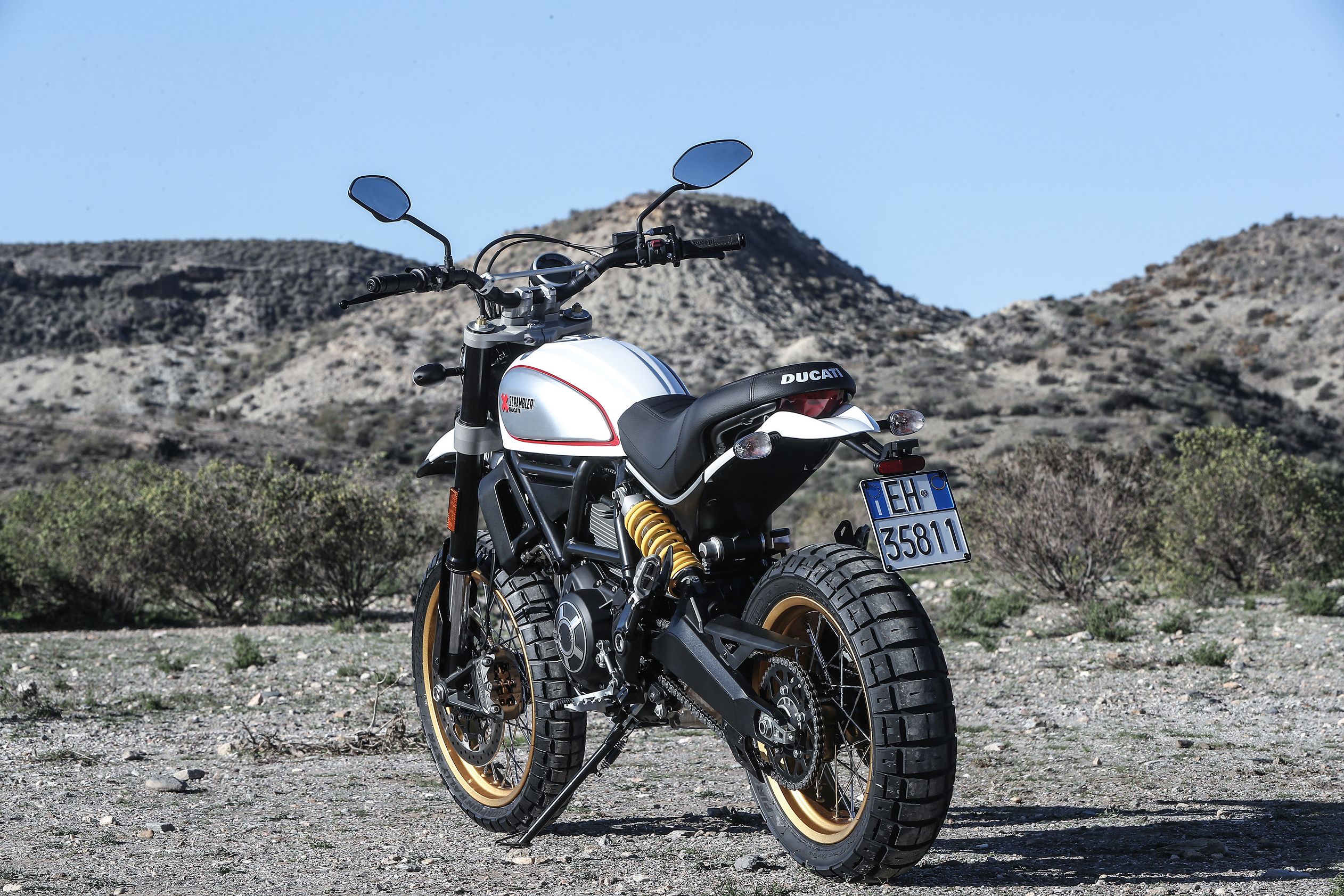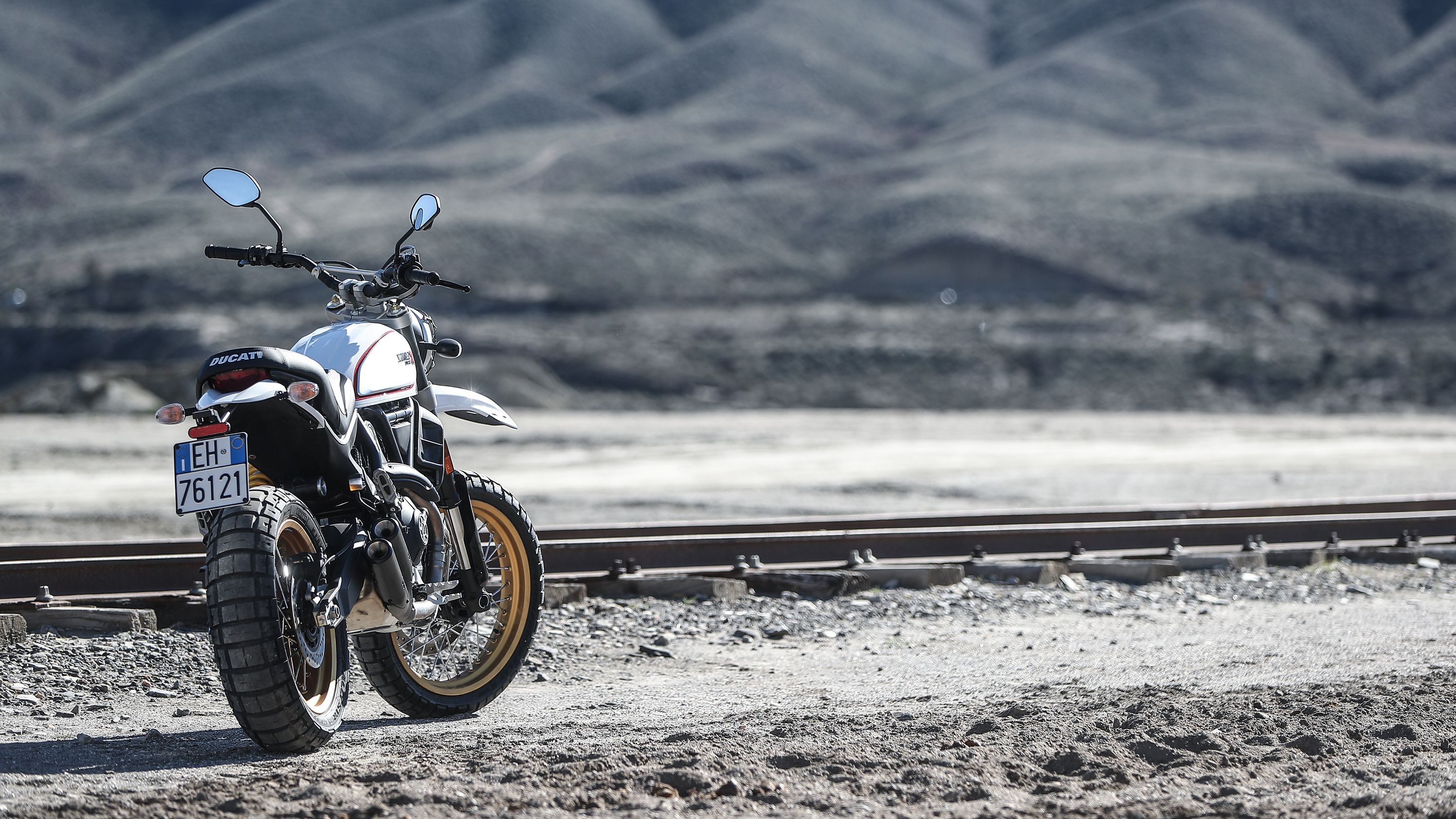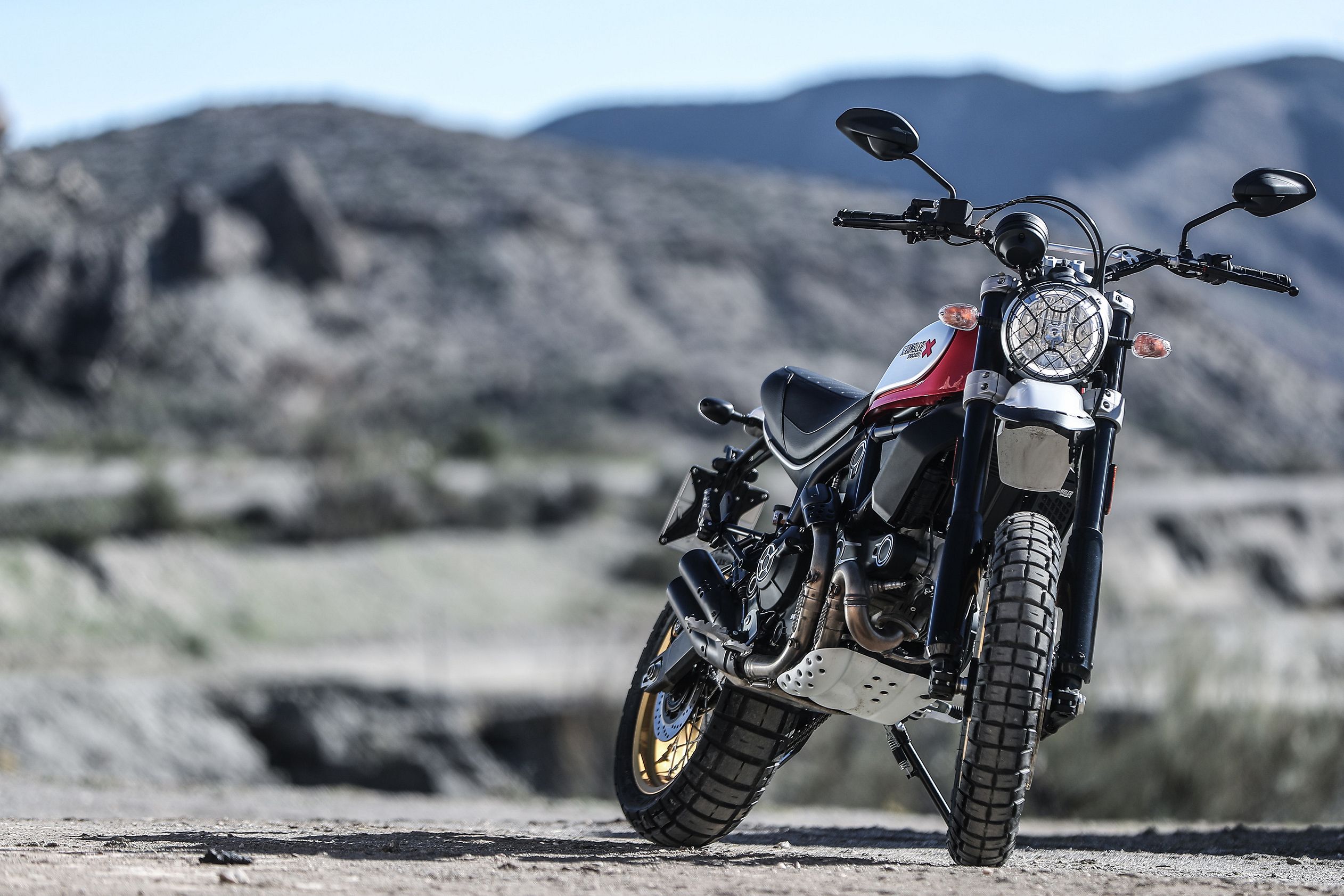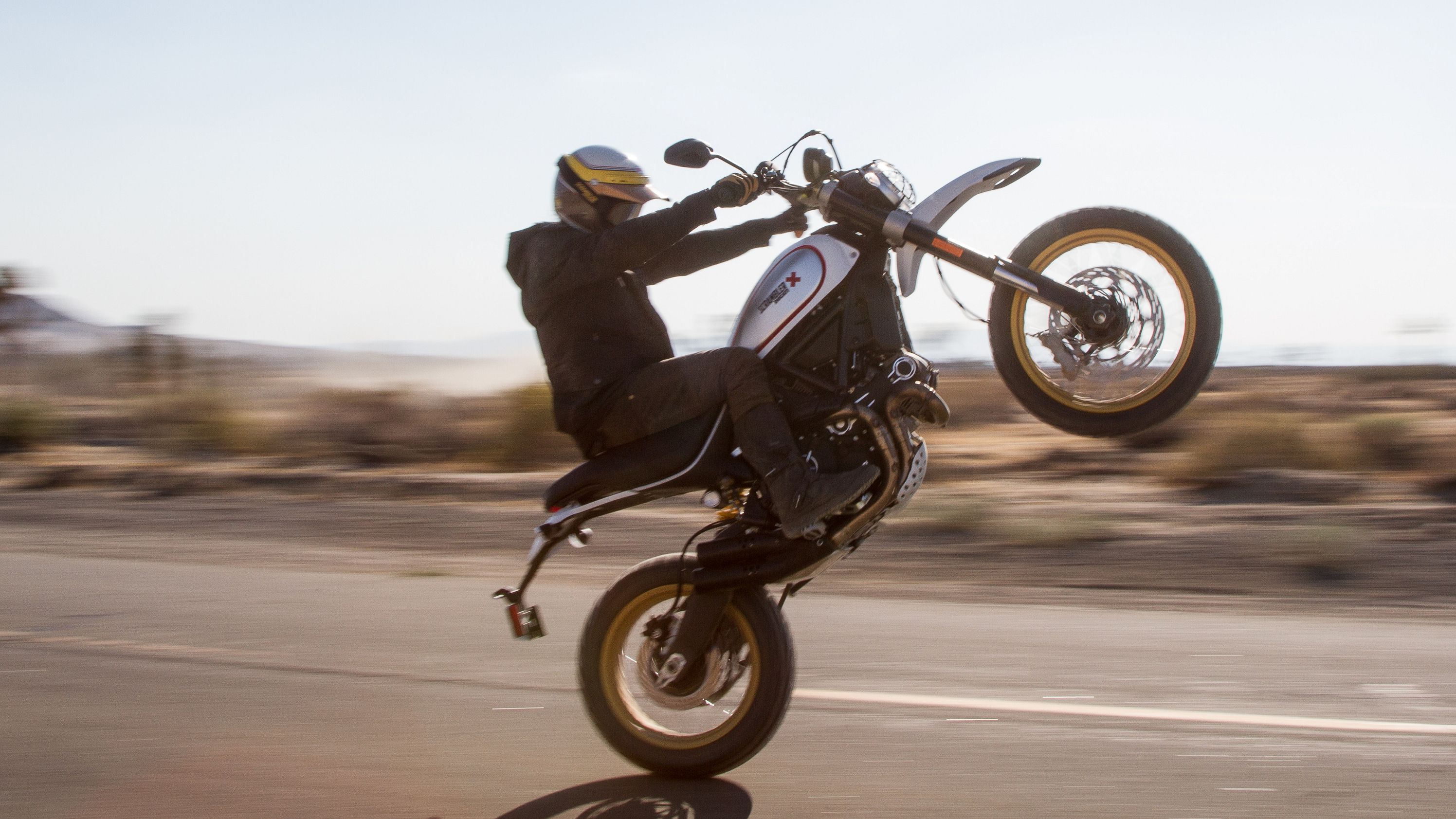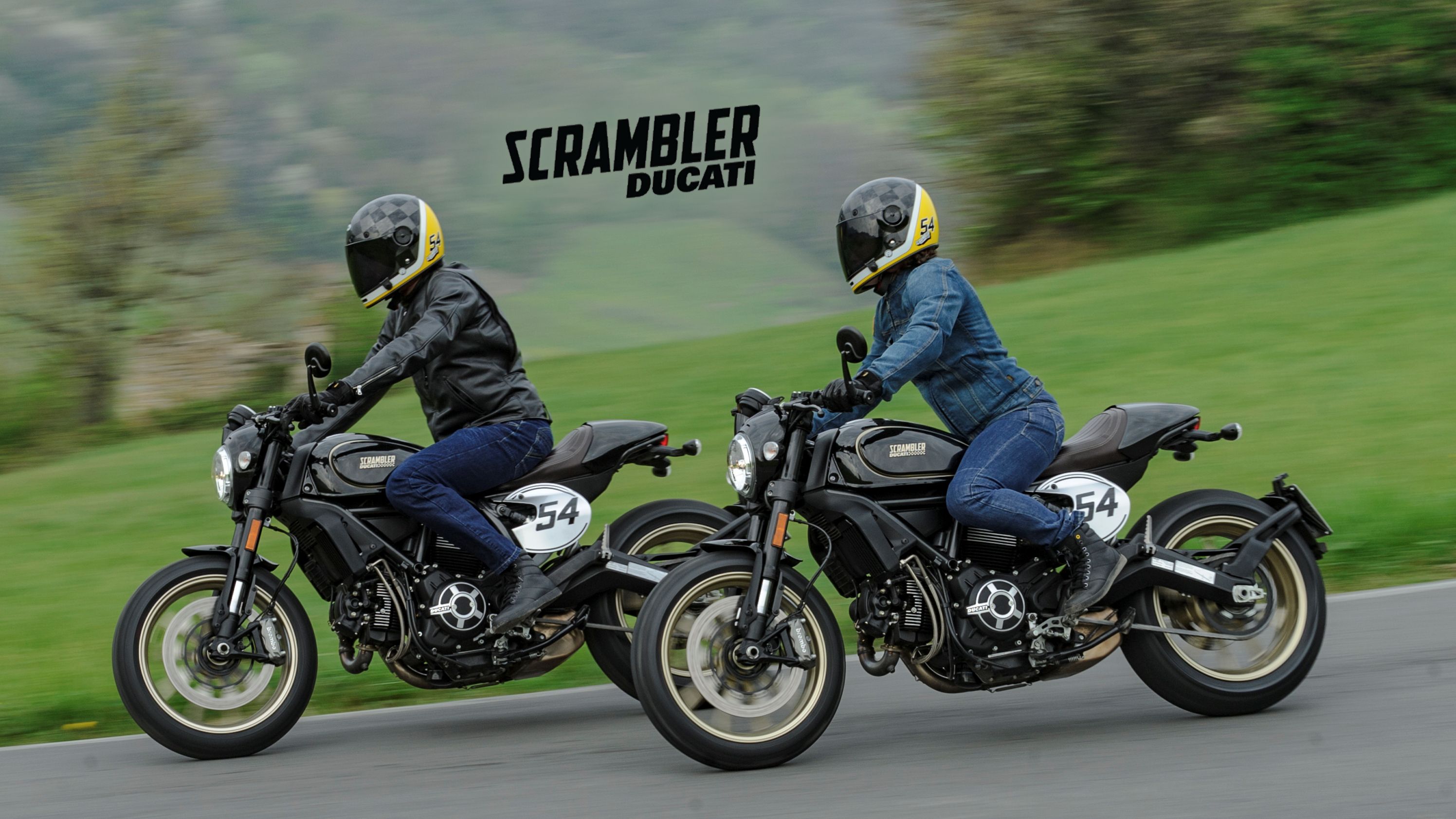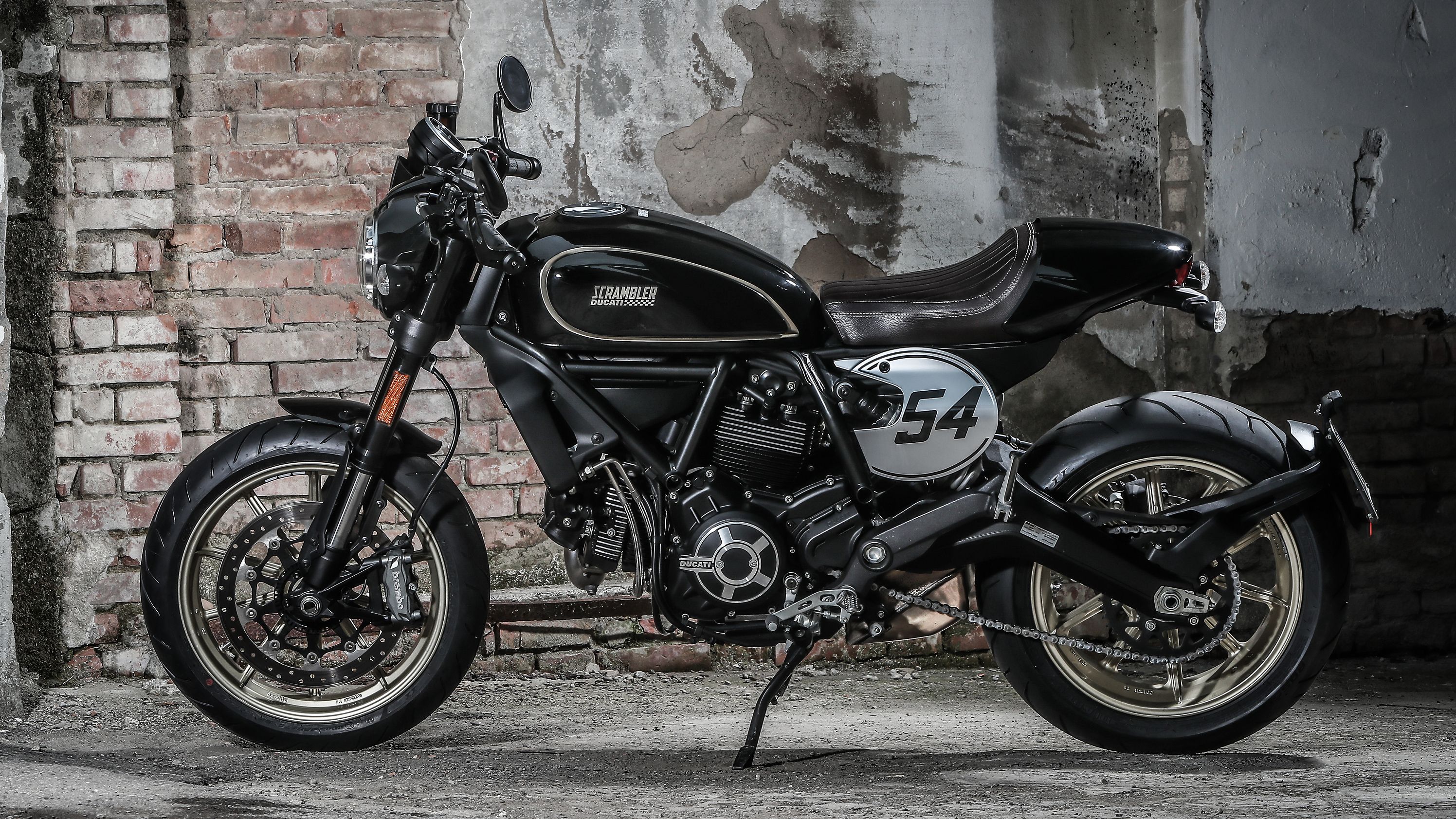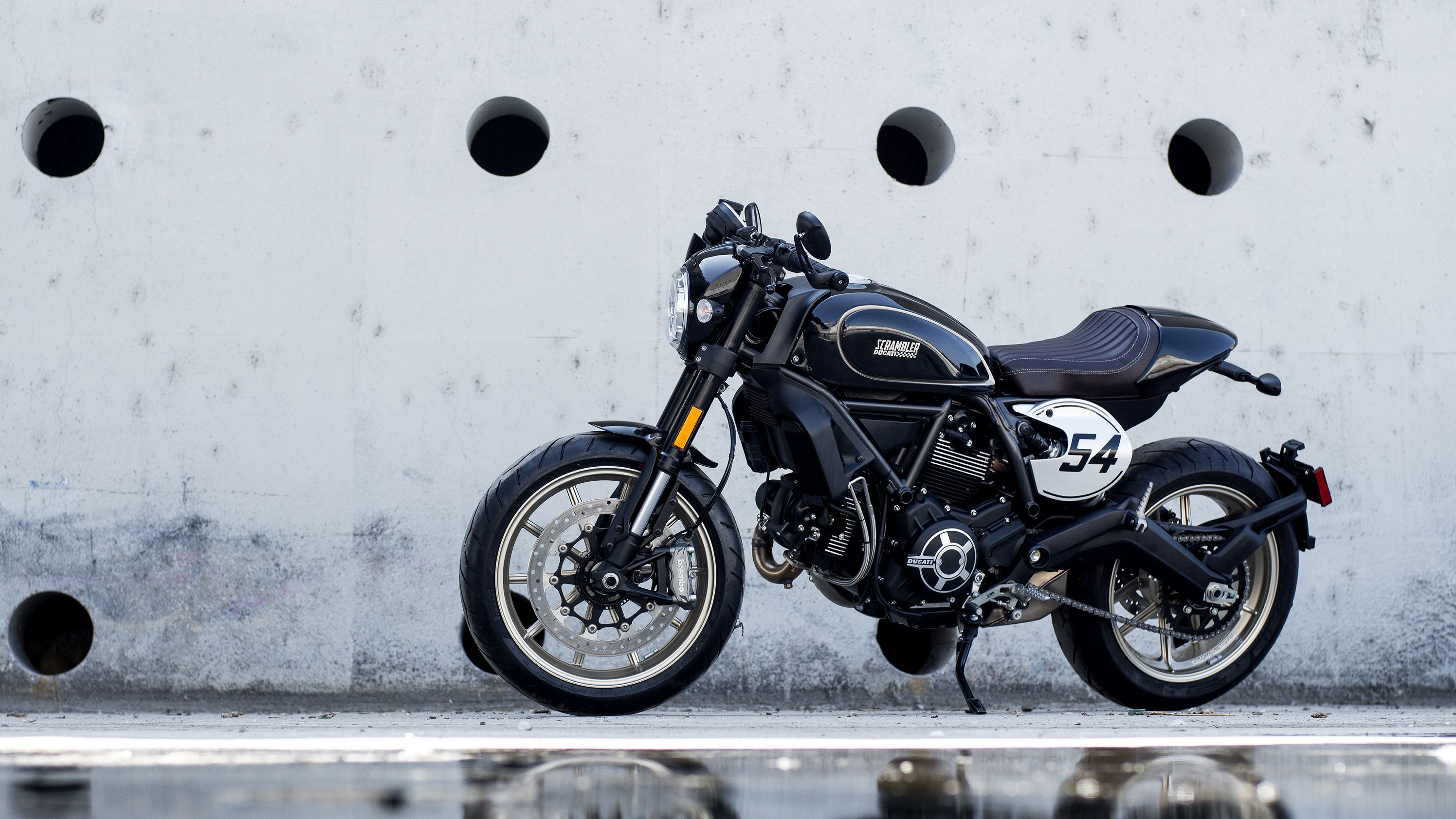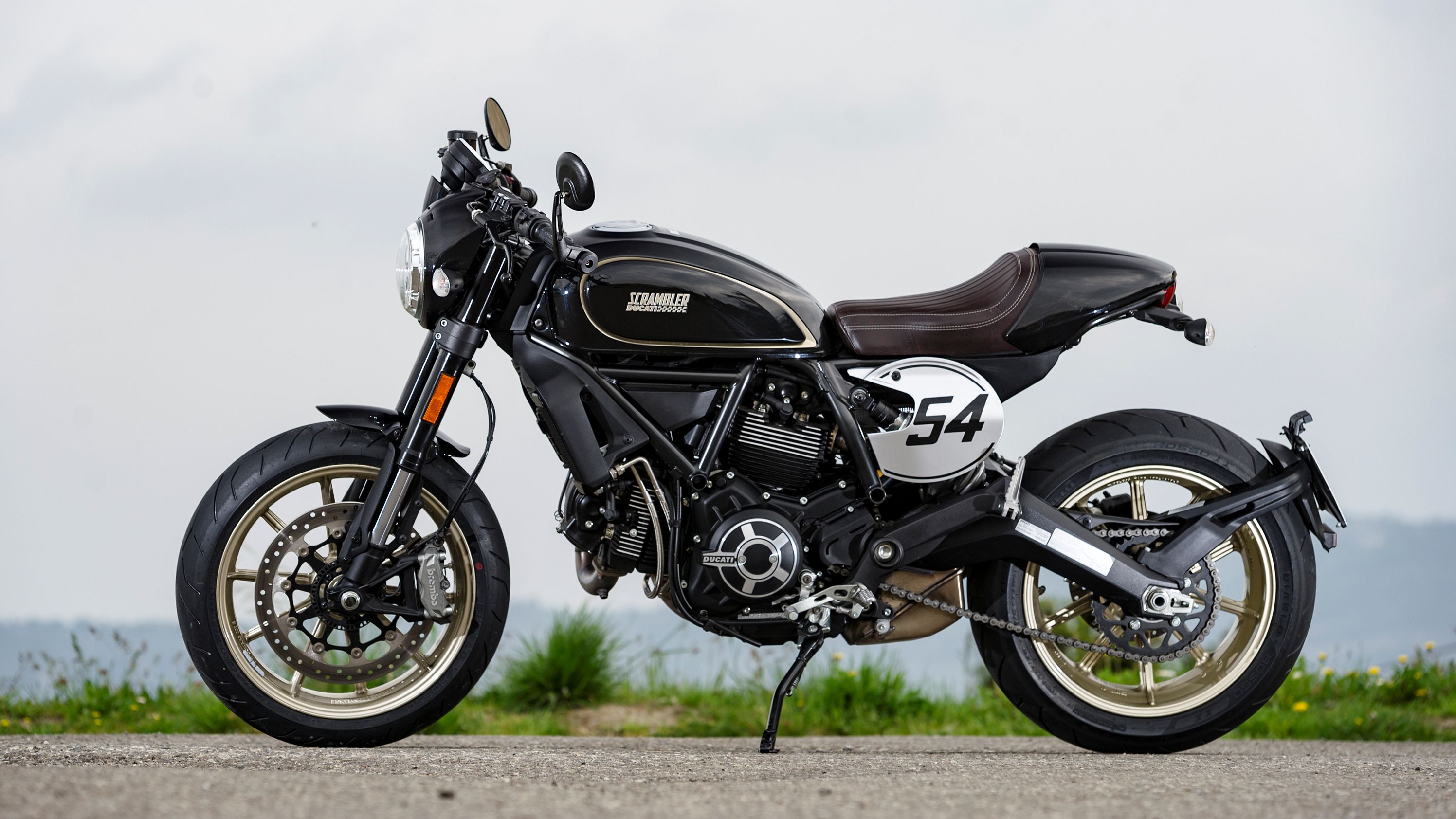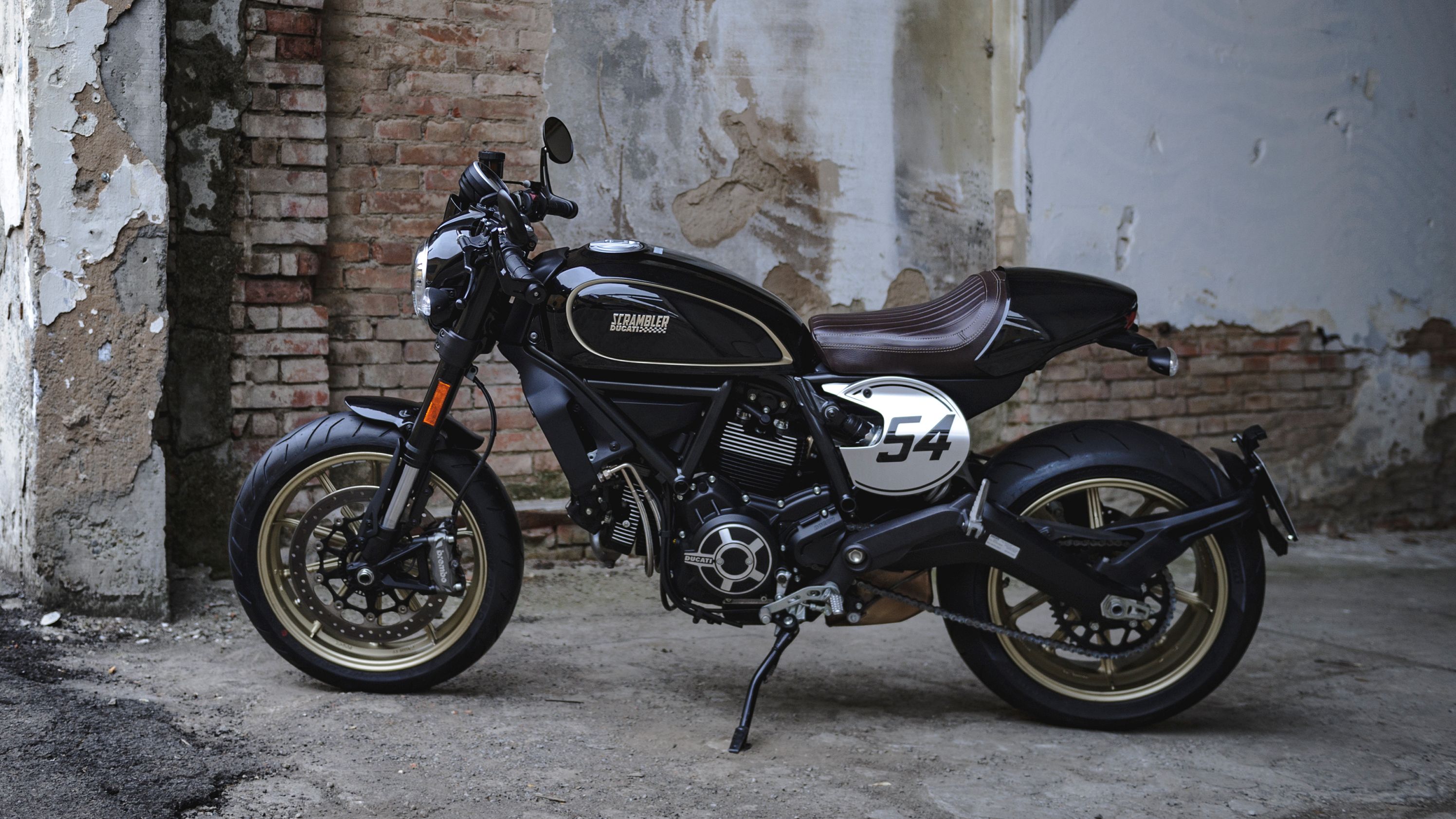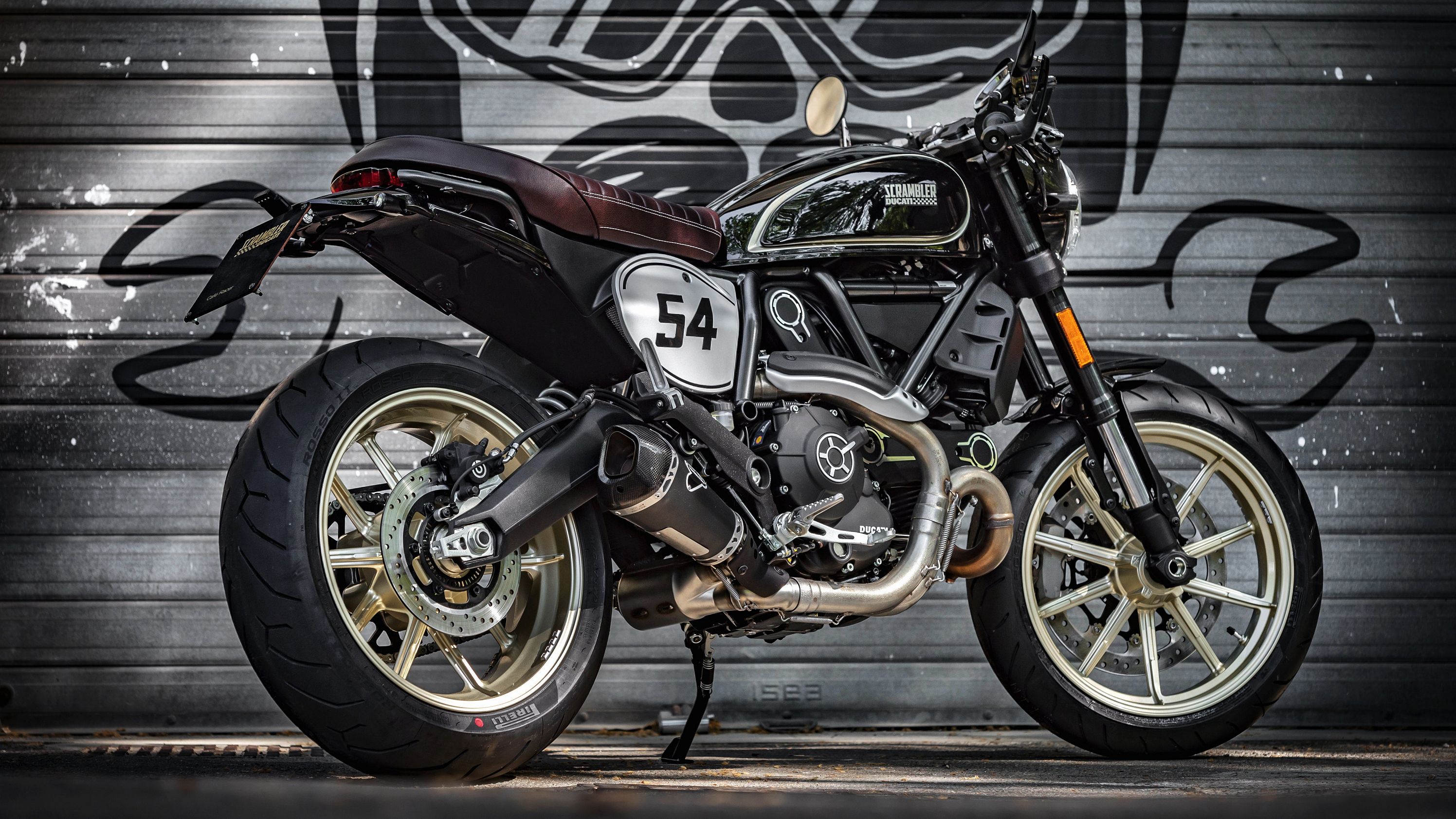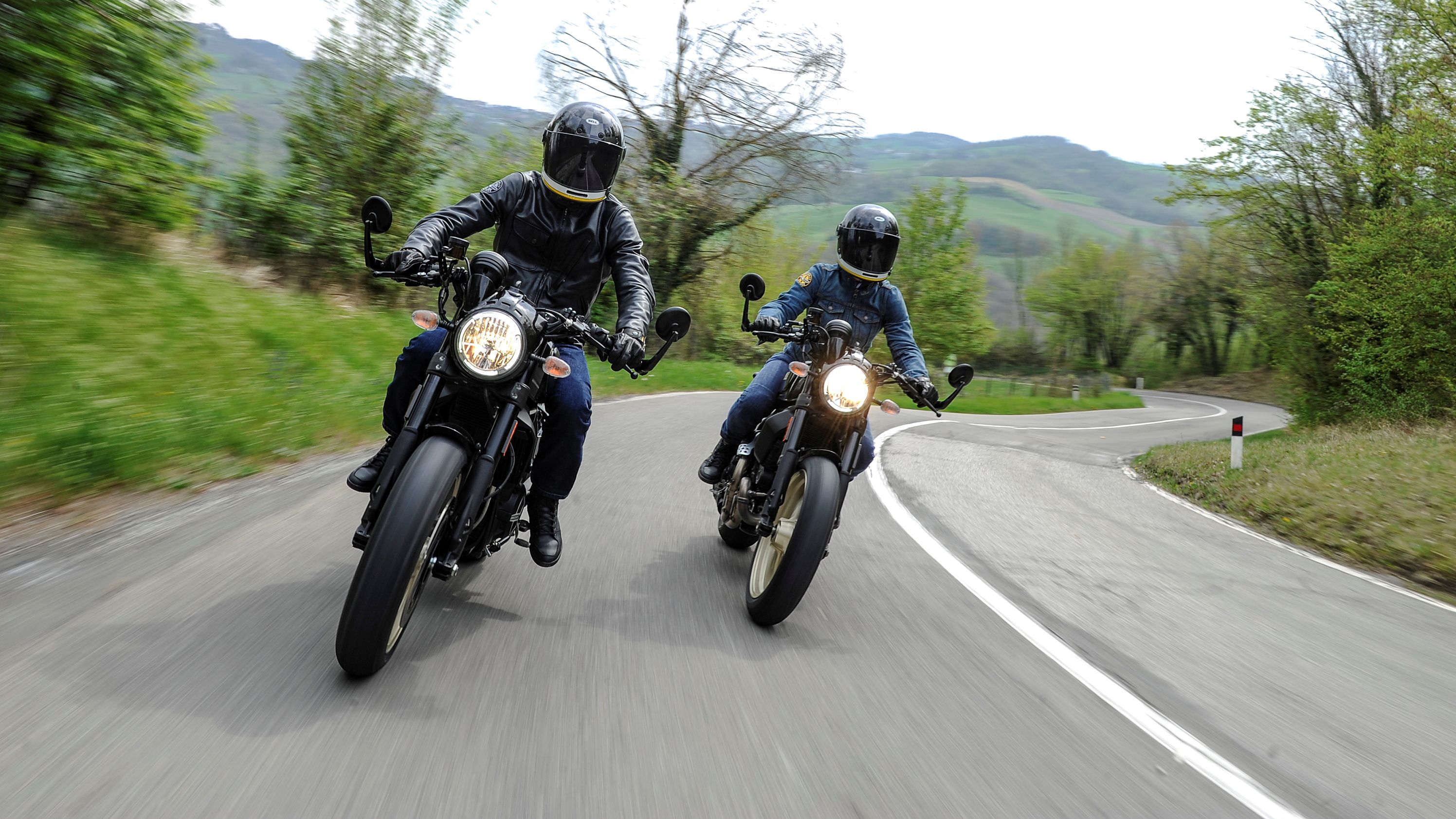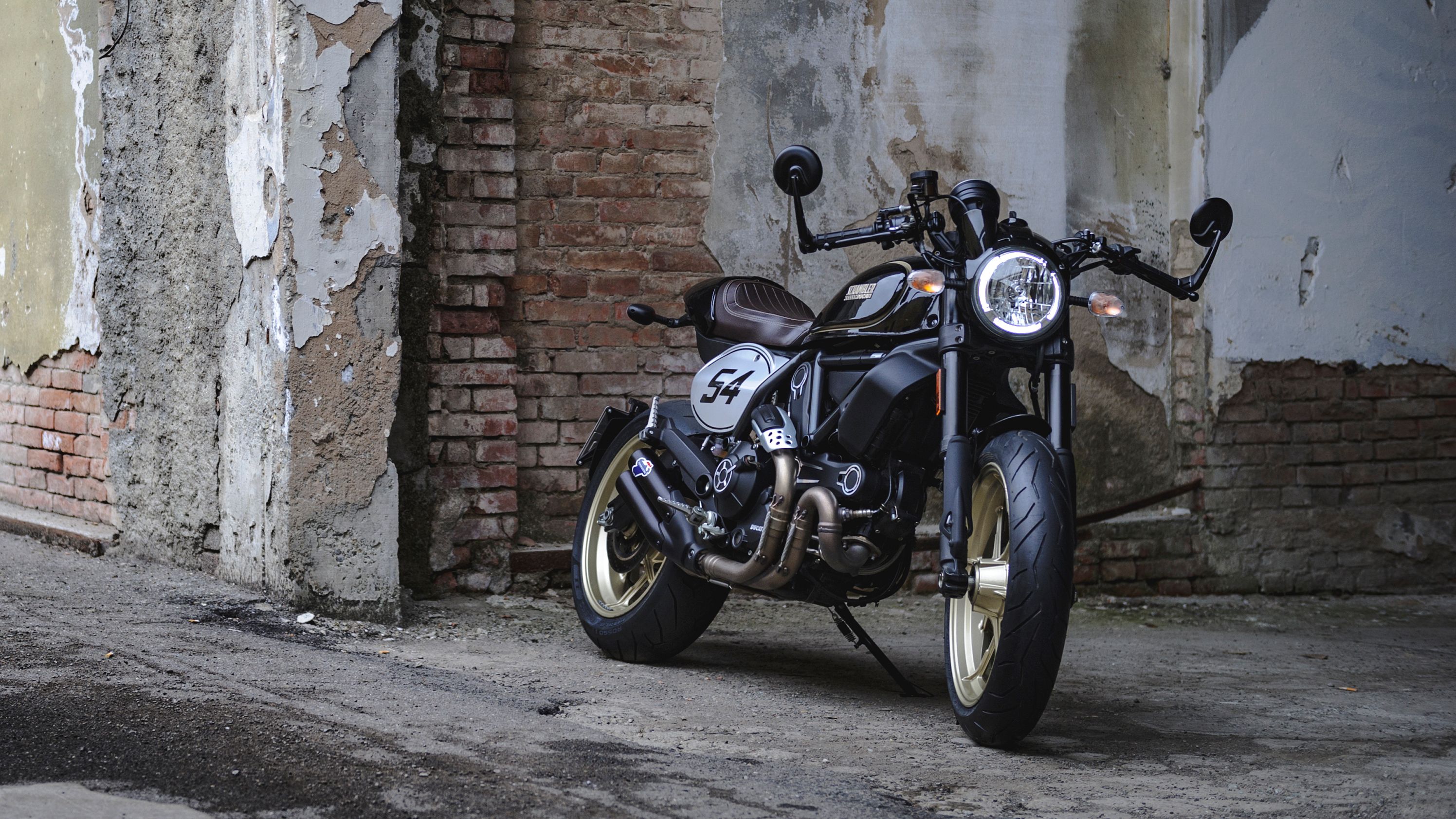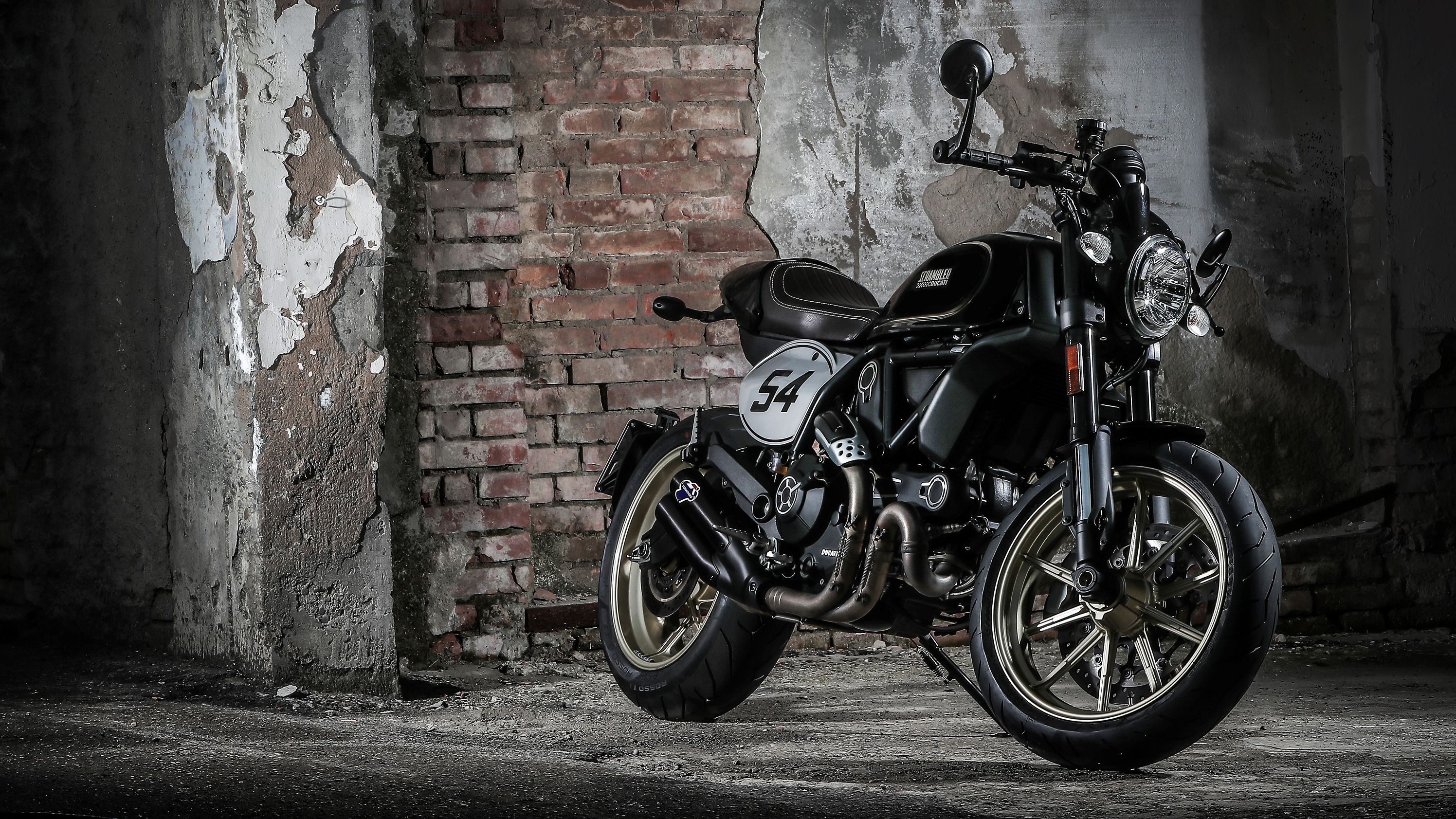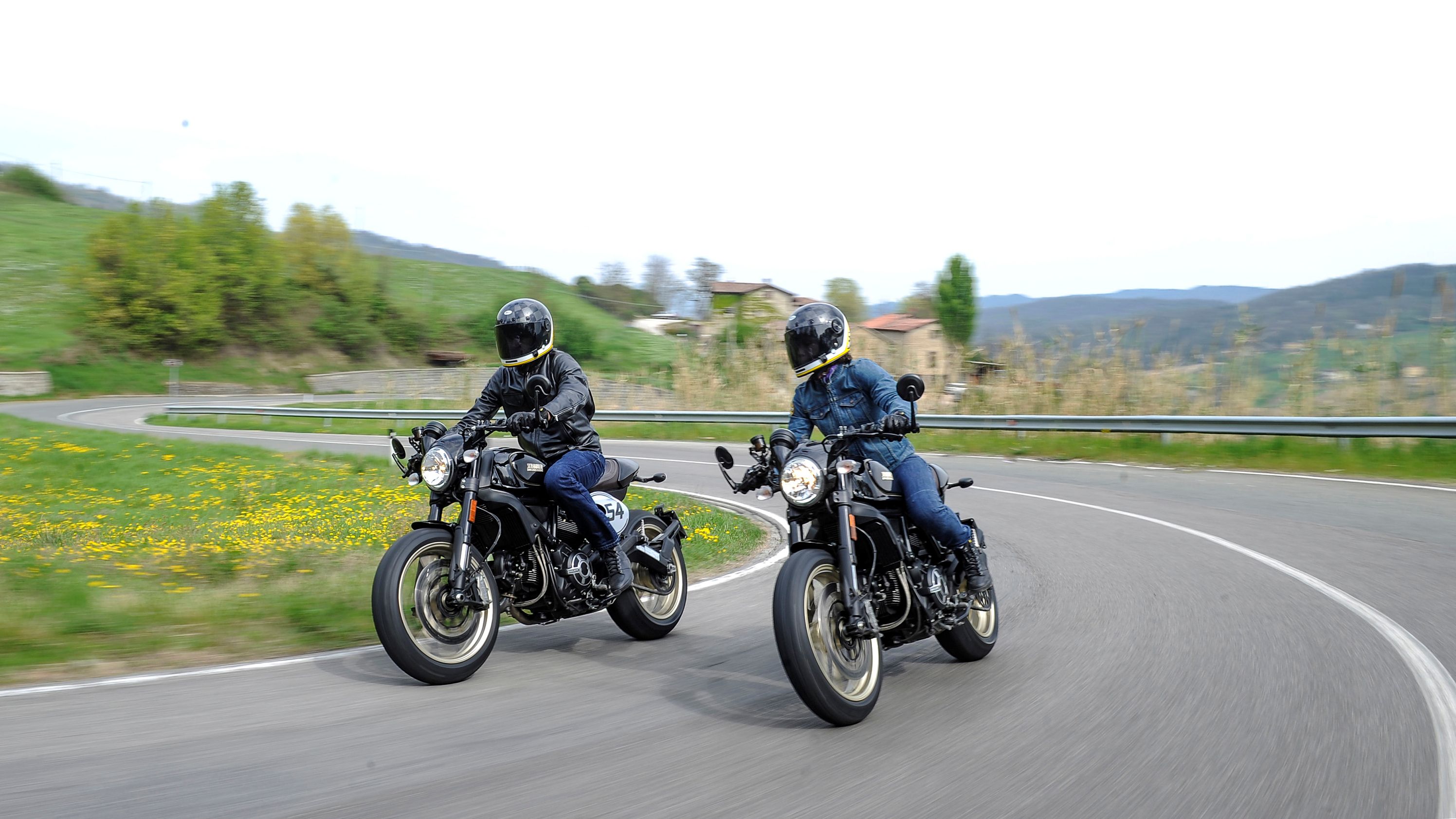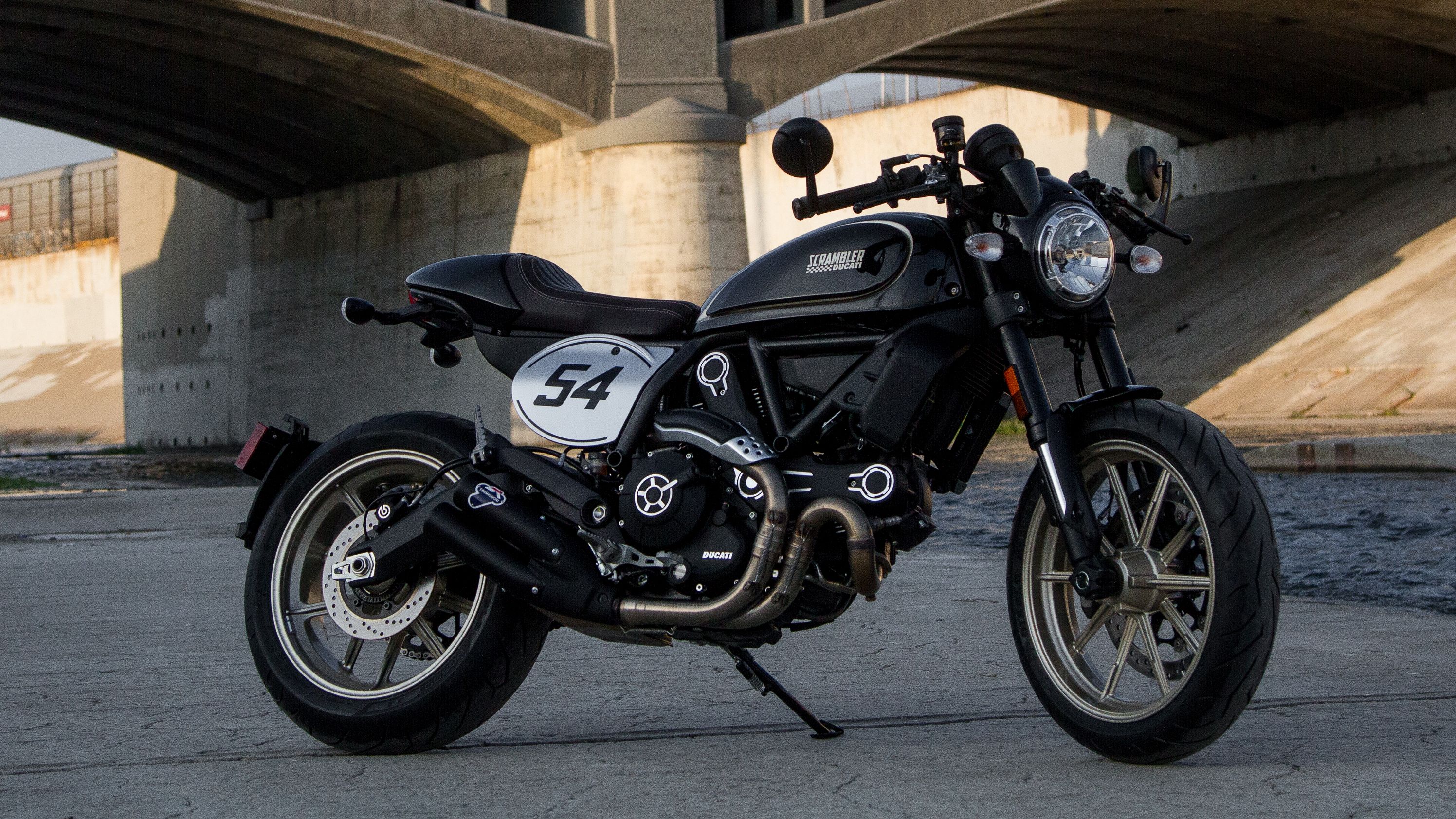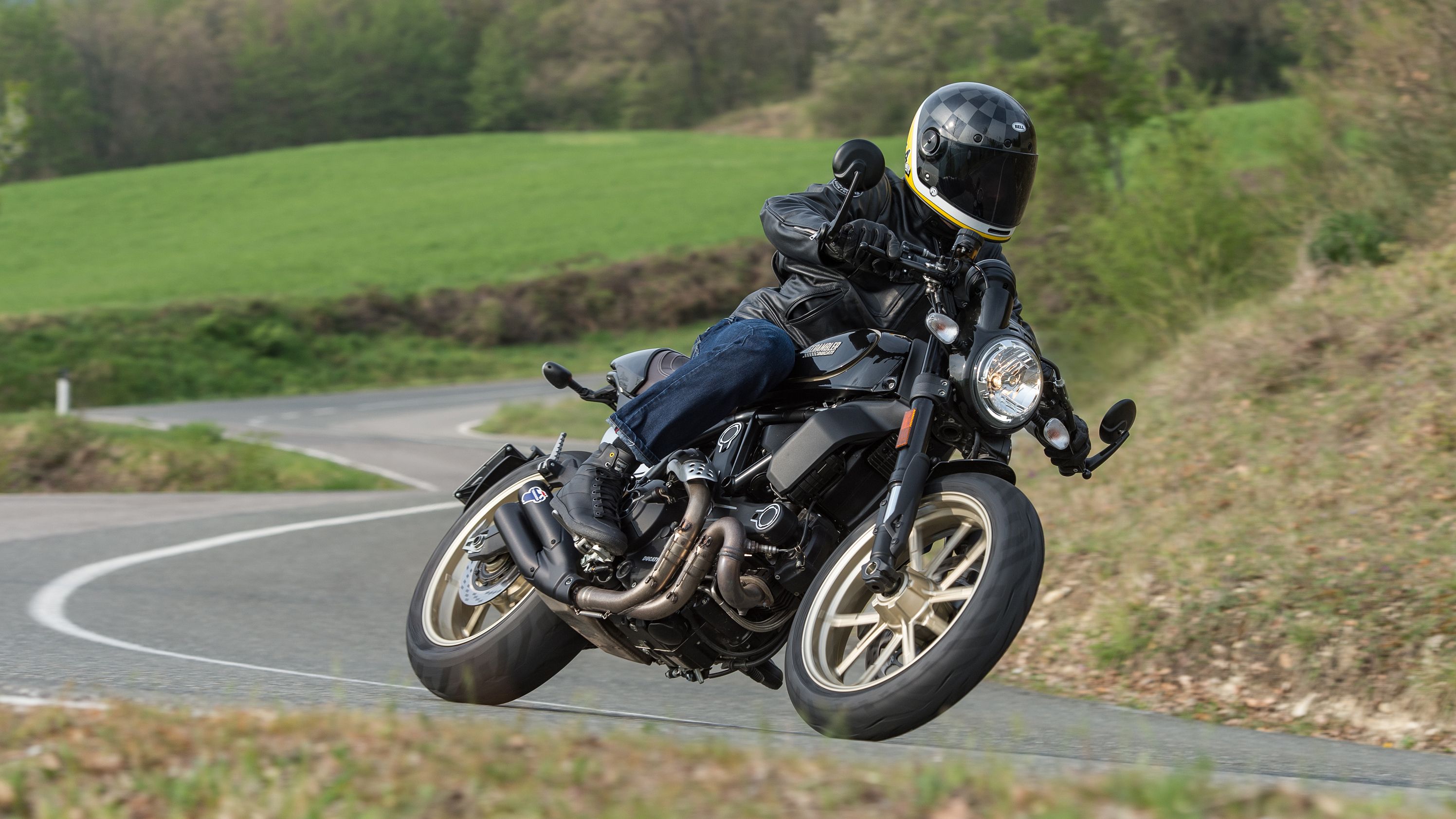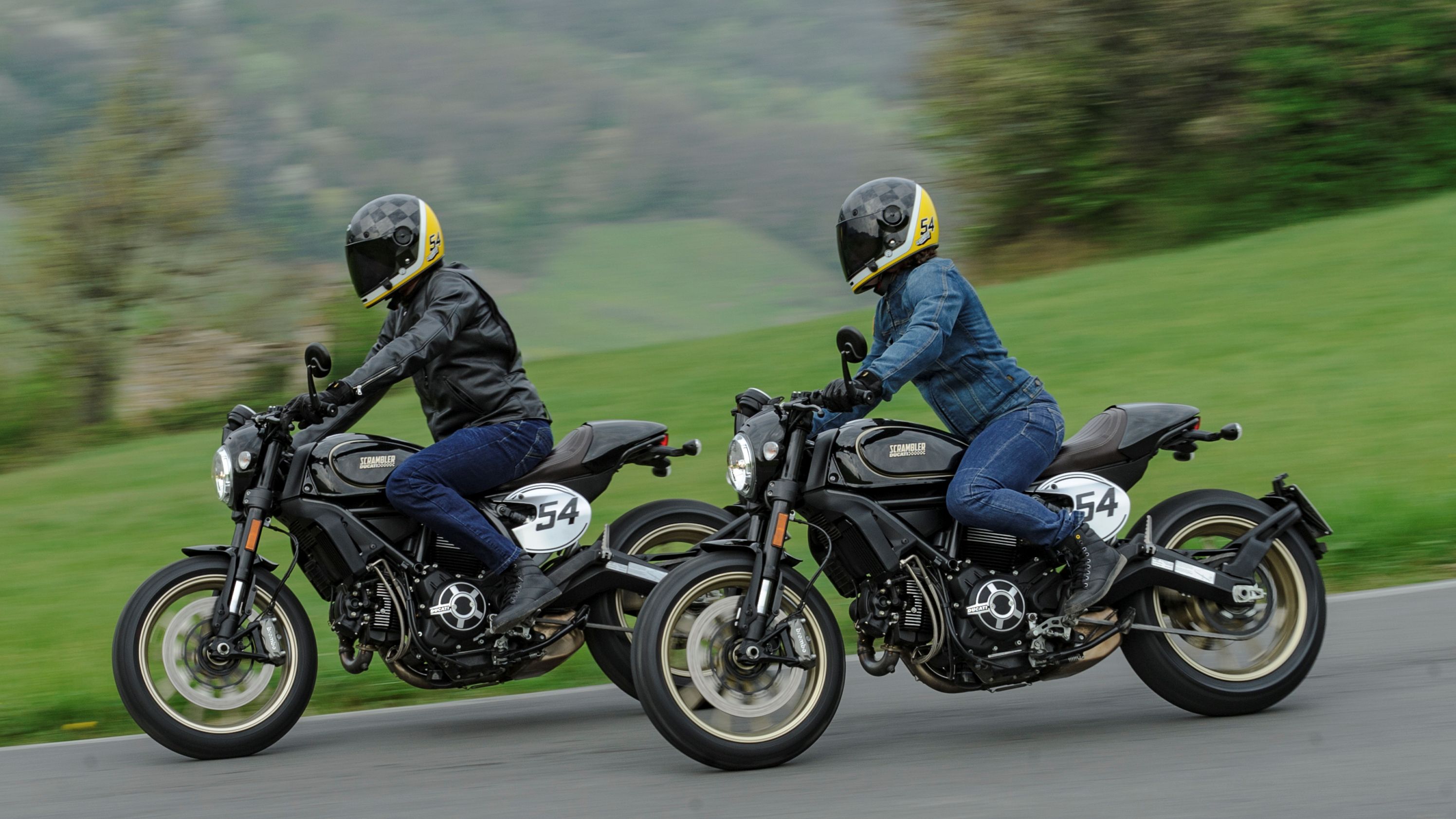Ducati's Scrambler line grew yet again in the 2017 model year with the addition of the Café Racer and Desert Sled. The Scrambler range has proven to be a veritable mine of possibilities as Ducati capable model in the entire range, and the Café Racer, well, it comes set up to look cool in an urban environment. Both rides get the same 803 cc mill that powers the rest of the Scrambler variants along with much the same chassis, but the differences, however minor, make all the difference in the world.
Continue reading for my review of the Ducati Scrambler Café Racer & Desert Sled.
2017 - 2018 Ducati Scrambler Café Racer & Desert Sled
- Make: Array
- Model: 2017 - 2018 Ducati Scrambler Café Racer & Desert Sled
- Engine/Motor: L-Twin
- [do not use] Vehicle Model: Array
Design
I've been eager to take a look at these bikes, and I look at this as a chance to gauge what all Ducati has learned from a few years of customer feedback and factory testing, so let's check it out. Similar but specialized, this pair bears all the familial markers in the shape of the exhaust, the fuel tank and the frame structure. In other words, we have a common Scrambler core. As we move away from center, things begin to diverge rapidly. On the Café, clip-on handlebars pull the rider into an aggressive jockey position, and bar-end mirrors keep things nice and clean. Inverted front forks mount a cast rim with a front fender that has been sliced and diced down to a bare minimum, much like the original café racers. The saddle comes with a shallow scoop for the rider and a hard pillion cover that, honestly, serves as the most tangible connection to the CR models of yesteryear.
Standoff turn signals and a tucked-away taillight keeps the subframe relatively clean, and much like the front, the rear comes with a postage-stamp fender eliminator that all but disappears behind the license plate. I guess one could argue that the number plate on each side could be another classic CR reference, but race numbers are so widely used I think that would be something of a reach. Still, it fits the look.
Next we have the off-road-tastic Desert Sled. The main design influence for this model comes from the California desert circa 1960s through the '70s. You can see it in the laced wheels, high front fender and rock guard over the single headlight. The single handlebar carries just a touch of rise and pullback, and the crossbar immediately calls to mind the motocross sector; not a bad connection to make if you're going for a slice of the on-road/off-road market.
A bash plate on the chin adds both to the function and the overall panache, and the bench seat makes for easy two-up riding with plenty of room to shift weight fore and aft for technical work. All very off-road-errific, and there's even more stashed away in the chassis components, so let's look there next.
Chassis
These rides come with basically the same frame as the rest of the family, which is to say a Trellis assembly built from tubular steel members. I say “basically” because the factory beefed up the Desert Sled a bit beyond stock so that it may better withstand the jumps and rough treatment associated with off-road fun, especially if you are doing it right. First off, the Sled's swingarm has been lengthened and strengthened while the frame and swingarm plates got beefed up as well. Steering geometry on the Sled is average at 24-degrees with 4.4 inches of trail and a 59.3-inch wheelbase, but the Café pulls the forks in to a tight, 21.8-degrees with 3.7 inches of trail and a 56.5-inch wheelbase. Obviously, the Café comes set up to carve, and it does so with aplomb on 41 mm Kayaba front forks and a preload-adjustable monoshock.
The Sled, on the other hand, rides on fully-adjustable, 46 mm forks with a preload- and rebound-adjustable rear shock. Not only does the size difference make the Sled front end tougher and better able to handle the stresses of off-road shenanigans, but it gets 7.9 inches of suspension travel at the axle, front and rear, while the Café claims only 5.9-inches.
The Café runs 17-inch cast rims with Pirelli's Diablo Rosso II hoops at both ends, but the Sled bumps the laced front wheel up to 19-inches with Scorpion Rally STR road knobbies, also by Pirelli. Both bikes run a single, 330 mm front disc with a four-pot caliper and a 245 mm rear with ABS protection as part of the standard trim package.
|
Model: |
Desert Sled |
Café Racer |
|
Frame: |
Tubular steel Trellis frame |
Tubular steel Trellis frame |
|
Front suspension: |
46mm fully adjustable usd forks |
Upside down Kayaba 41 mm fork |
|
Rear suspension: |
Kayaba rear shock, pre-load and rebound adjustable. aluminum double-sided swingarm |
Kayaba rear shock with fully adjustable preload |
|
Front brake: |
330 mm disc, radial 4-piston caliper with ABS as standard equipment |
330 mm semi-floating discs, radially mounted Monobloc Brembo M4-32 caliper, 4-pistons, radial pump with adjustable lever, with Bosch ABS as standard |
|
Rear brake: |
245 mm disc, 1-piston floating caliper with ABS as standard equipment |
245 mm disc, 1-piston floating caliper with Bosch ABS as standard equipment |
|
Front wheel/Travel: |
Spoked aluminum wheel 3.00" x 19"/ 200 mm (7.9 in) |
10-spoke in light alloy 3.50" x 17"/ 150 mm (5.9 in) |
|
Front tire: |
Pirelli SCORPIONTM RALLY STR 120/70 R19 |
Pirelli Diablo Rosso II 120/70 ZR17 |
|
Rear wheel/Travel: |
Spoked aluminum wheel 4.50" x 17"/ 200 mm (7.9 in) |
Kayaba rear shock with fully adjustable preload/ 150 mm (5.9 in) |
|
Rear tire: |
Pirelli SCORPION™ RALLY STR 170/60 R17 |
Pirelli Diablo Rosso II 180/55 ZR17 |
Drivetrain
We have an updated engine from last year, but really the changes were only to meet the Euro 4 emission standards. It's still the proven, air-cooled L-twin that powers the rest of the Scrambler range. Desmodromic timing controls the two-valve heads with a 50 mm throttle body to manage the induction. The 88 mm bore and 66 mm stroke gives us an oversquare, 803 cc displacement, and an 11-to-1 compression ratio will require mid-grade pusholine at the least.
Although the mill is air-cooled, it does mount an oil cooler high on the downtubes for a little extra protection for the engine's lifeblood. Duc mitigates the exhaust note with a Termignoni silencer in the exhaust system that also boasts a catalytic converter and pair of Lambda probes that also help the mill meet emissions requirements. What all this gives us is a plant that produces 50 pound-feet of torque at 5,750 rpm and 75 horsepower once you wind it up to 8,250 rpm on a bike that weighs in at 414-pounds soaking-ass wet. Funtimes, my friends. Funtimes.
|
Engine: |
L-Twin, Desmodromic distribution, 2 valves per cylinder, air cooled |
|
Displacement: |
803 cc |
|
Bore x stroke: |
88 x 66 mm |
|
Compression ratio: |
11:1 |
|
Power : |
55 kW (75 hp) @ 8,250 rpm |
|
Torque: |
68 Nm (50 lb-ft) @ 5,750 rpm |
|
Fuel injection: |
Electronic fuel injection, 50 mm throttle body |
|
Exhaust: |
Stainless steel muffler with catalytic converter and 2 lambda probes, aluminum tail pipes |
|
Gearbox: |
6 speed |
Price
The Café Racer comes with black sheet metal and a dark-tan saddle with an $11,695 MSRP, while the Desert Sled comes in Red Dusk for the same price. The Sled is also offered in White Mirage or Black Edition for a couple o' bills more at $11,895.
|
Model: |
Desert Sled |
Café Racer |
|
Desert Sled |
24 months unlimited mileage 12,000 km (7.500 m) / 12 months 12,000 km (7.500 m |
24 months unlimited mileage 12,000 km (7.500 m) / 12 months 12,000 km (7.500 m |
|
Café Racer |
Red Dusk, Black Edition, White Mirage |
Black Coffee |
|
Warranty: |
||
|
2017: |
Red Dusk: $11,395, White Mirage: $ 11,595 |
$11,395 |
|
2018: |
Red Dusk: $11,695, White Mirage, Black Edition: $ 11,895 |
$11,695 |
Competitor
Nowadays we have scramblers o'plenty from every quarter, and one can hardly swing a cat without hitting one anymore. Even companies without old-school Scrambler roots are cashing in on the resurgent popularity of the genre, but I thought it would be appropriate to look at a company that was around for the originals, so my pick for the head-to-head against the Desert Sled is the air-cooled Scrambler from Triumph.
The Triumph's British looks are a big selling point for me, but there are trade offs. In spite of my preference for the Scrambler's unsprung front fender, I must concede that it isn't as appropriate for off-road work as the mildly hideous, tripletree-mount mudguard on the Duc. The Desert Sled's wire headlight cage makes up for the fender somewhat with boss looks and an extra layer of real-world protection.
Where Ducati went with a Trellis frame, Trumpet kept it old-school with a double-downtube/double-cradle bone structure. Duc went with the modern tech at the front end as well with a 41 mm, inverted front fork and laydown monoshock in back versus the pair of external coil-overs and right-way-up forks on the Triumph. Neither bike really gets any points in the suspension department, and come only with adjustable spring preload at the rear end. As big as the 310 mm front brake disc is on the Triumph, the Duc is a skosh bigger at 330 mm, and Ducati brings the only ABS to the table.
The engines represent a classic matchup of V-twin versus parallel-twin with Triumph holding the size edge with an 865 cc displacement. Air-cooling and fuel injection are constants across the board, but the engine note is quite different. The Duc naturally has a V-twin lope, and the Trumpet runs a 270-degree firing order that has a tempo break all its own. Power output sees Duc pulling ahead with its 75-ponies, well over the 50-horsepower Trumpet, but both produce the same 50 pounds o' grunt. That may well be a deal breaker for some.
Speaking of deals, Duc comes off looking a little proud at the checkout with an $11,695 sticker while last year's Triumph Scrambler rolled for just under the 10K mark at between $9,400 and $9,900 depending on which color you choose, and that may be a deal breaker for folks on a budget. The scales will tip based on the price-versus-power equation, most likely.
versus0}
“I like Ducati's Scrambler family, and especially like how flexible it is as a platform that lends itself to multiple genres. Having said that, I think I prefer the looks and price on the Trumpet 'cause I like the British look, and Trumpet has the more genuine product. However, if you aren't hung up on such things like I am, there's versus wrong with the Ducati ride.”
He Said
My wife and fellow writer, Allyn Hinton, says, "These Scramblers have been Ducati's best sellers by a mile and it's no wonder. They took a classic style and revved it up to be a fun-to-ride bike. Now they've come out with a bike that actually lives up to the Scrambler name in the Desert Sled. It's tall as would be expected in a proper off-roader and comes with the appropriate accessories for the job. Finally, we have a scrambler that actually nothing a scrambler and not just in name only."
She Said
|
Model: |
Desert Sled |
Café Racer |
|
is} |
||
|
Engine: |
L-Twin, Desmodromic distribution, 2 valves per cylinder, air cooled |
L-Twin, Desmodromic distribution, 2 valves per cylinder, air cooled |
|
Displacement: |
803 cc |
803 cc |
|
Bore x stroke: |
88 x 66 mm |
88 x 66 mm |
|
Compression ratio: |
11:1 |
11:1 |
|
Power : |
55 kW (75 hp) @ 8,250 rpm |
55 kW (75 hp) @ 8,250 rpm |
|
Torque: |
68 Nm (50 lb-ft) @ 5,750 rpm |
68 Nm (50 lb-ft) @ 5,750 rpm |
|
Fuel injection: |
Electronic fuel injection, 50 mm throttle body |
Electronic fuel injection, 50 mm throttle body |
|
Exhaust: |
Stainless steel muffler with catalytic converter and 2 lambda probes, aluminum tail pipes |
Stainless steel muffler with catalytic converter and 2 lambda probes, aluminum tail pipes |
|
Emissions: |
Euro 4 |
Euro 4 |
|
Consumption : |
5.0 l/100 km - CO2 119 g/km |
5.0 l/100 km - CO2 119 g/km |
|
Gearbox: |
6 speed |
6 speed |
|
Ratio: |
1=32/13 2=30/18 3=28/21 4=26/23 5=22/22 6=24/26 |
1=32/13 2=30/18 3=28/21 4=26/23 5=22/22 6=24/26 |
|
Primary drive: |
Straight cut gears; Ratio 1.85:1 |
Straight cut gears; Ratio 1.85:1 |
|
Final drive: |
Chain; Front sprocket 15; Rear sprocket 46 |
Chain; Front sprocket 15; Rear sprocket 46 |
|
Clutch: |
APTC wet multiplate with mechanical control |
APTC wet multiplate with mechanical control |
|
Desert Sled |
||
|
Frame: |
Tubular steel Trellis frame |
Tubular steel Trellis frame |
|
Front suspension: |
46mm fully adjustable usd forks |
Upside down Kayaba 41 mm fork |
|
Front wheel travel: |
200 mm (7.9 in) |
mm (5.9 in) |
|
Front wheel: |
Spoked aluminum wheel 3.00" x 19" |
10-spoke in light alloy 3.50" x 17" |
|
Front tire: |
Pirelli SCORPIONTM RALLY STR 120/70 R19 |
Pirelli Diablo Rosso II 120/70 ZR17 |
|
Rear suspension: |
Kayaba rear shock, pre-load and rebound adjustable. aluminum double-sided swingarm |
Kayaba rear shock with fully adjustable preload |
|
Rear wheel travel: |
200 mm |
150 mm (5.9 in) |
|
Rear wheel: |
Spoked aluminum wheel 4.50" x 17" |
Kayaba rear shock with fully adjustable preload |
|
Rear tire: |
Pirelli SCORPION™ RALLY STR 170/60 R17 |
Pirelli Diablo Rosso II 180/55 ZR17 |
|
Front brake: |
330 mm disc, radial 4-piston caliper with ABS as standard equipment |
330 mm semi-floating discs, radially mounted Monobloc Brembo M4-32 caliper, 4-pistons, radial pump with adjustable lever, with Bosch ABS as standard |
|
Rear brake: |
245 mm disc, 1-piston floating caliper with ABS as standard equipment |
245 mm disc, 1-piston floating caliper with Bosch ABS as standard equipment |
|
Café Racer |
||
|
Wheelbase: |
1505 mm (59.3 in) |
1,436 mm (56.5 in) |
|
Rake: |
24° |
21.8° |
|
Trail: |
112 mm (4.4 in.) |
93.9 mm (3.7 in) |
|
Total steering lock: |
35° |
35° |
|
Fuel tank capacity: |
13.5 L - 3.57 gallons (US) |
13.5 L - 3.57 gallons (US) |
|
Dry weight: |
191 kg (421 lb) |
172 kg (379 lb) |
|
Wet weight: |
207 kg (456 lb) |
188 kg (414 lb) |
|
Seat height: |
860 mm (33.9 in) - low seat 840 mm (33.0 in) available as accessory |
805 mm (31.7 in) |
|
Max height: |
1.213 mm (47.8 in) (brake reservoir) |
1,066 mm (41.0 in) |
|
Max width: |
940 mm (37.0 in) (mirrors) |
810 mm 31.9 in) |
|
Max length: |
2,000 mm (86.6 in) |
2,107 mm (83.0in) |
|
Number of seats: |
Dual seat |
Dual seat |
|
Engine & Drivetrain: |
||
|
Standard equipment : |
Steel tank with interchangeable aluminum side panels, headlight with homologate grill, LED light-guide and interchangeable aluminum cover, LED rear light with diffusion-light, LCD instruments with interchangeable aluminum cover, machine-finished aluminum belt covers, under-seat storage compartment with USB socket, aluminum handlebar with cross-strut, front stem protectors, seat with specific design, high front mudguard, long rear mudguard and high plate support |
Steel tank with interchangeable aluminum side panels, headlight with glass lens, LED light-guide and painted fairing, LED rear light with diffusion-light, LCD instruments with interchangeable aluminum cover, machine-finished aluminum belt covers, Black engine with brushed fins, clip on handlebars, aluminum handelbars mirrors, sports style front mudguard, dedicated side number plate, "café racer" seat with passenger seat cover, under-seat storage compartment with USB socket |
|
Warranty: |
24 months unlimited mileage 12,000 km (7.500 m) / 12 months 12,000 km (7.500 m |
24 months unlimited mileage 12,000 km (7.500 m) / 12 months 12,000 km (7.500 m |
|
Colors: |
Red Dusk, Black Edition, White Mirage |
Black Coffee |
|
Price: |
||
|
2017: |
Red Dusk: $11,395, White Mirage: $ 11,595 |
$11,395 |
|
2018: |
Red Dusk: $11,695, White Mirage, Black Edition: $ 11,895 |
$11,695 |
References
Triumph Scrambler
See our review of the Triumph Scrambler.


